Methods Of Disease Characterisation
Bunte; Kerstin ; et al.
U.S. patent application number 16/331794 was filed with the patent office on 2019-11-28 for methods of disease characterisation. The applicant listed for this patent is The University of Birmingham. Invention is credited to Wiebke Arlt, Kerstin Bunte, Peter Tino.
| Application Number | 20190362857 16/331794 |
| Document ID | / |
| Family ID | 57234570 |
| Filed Date | 2019-11-28 |
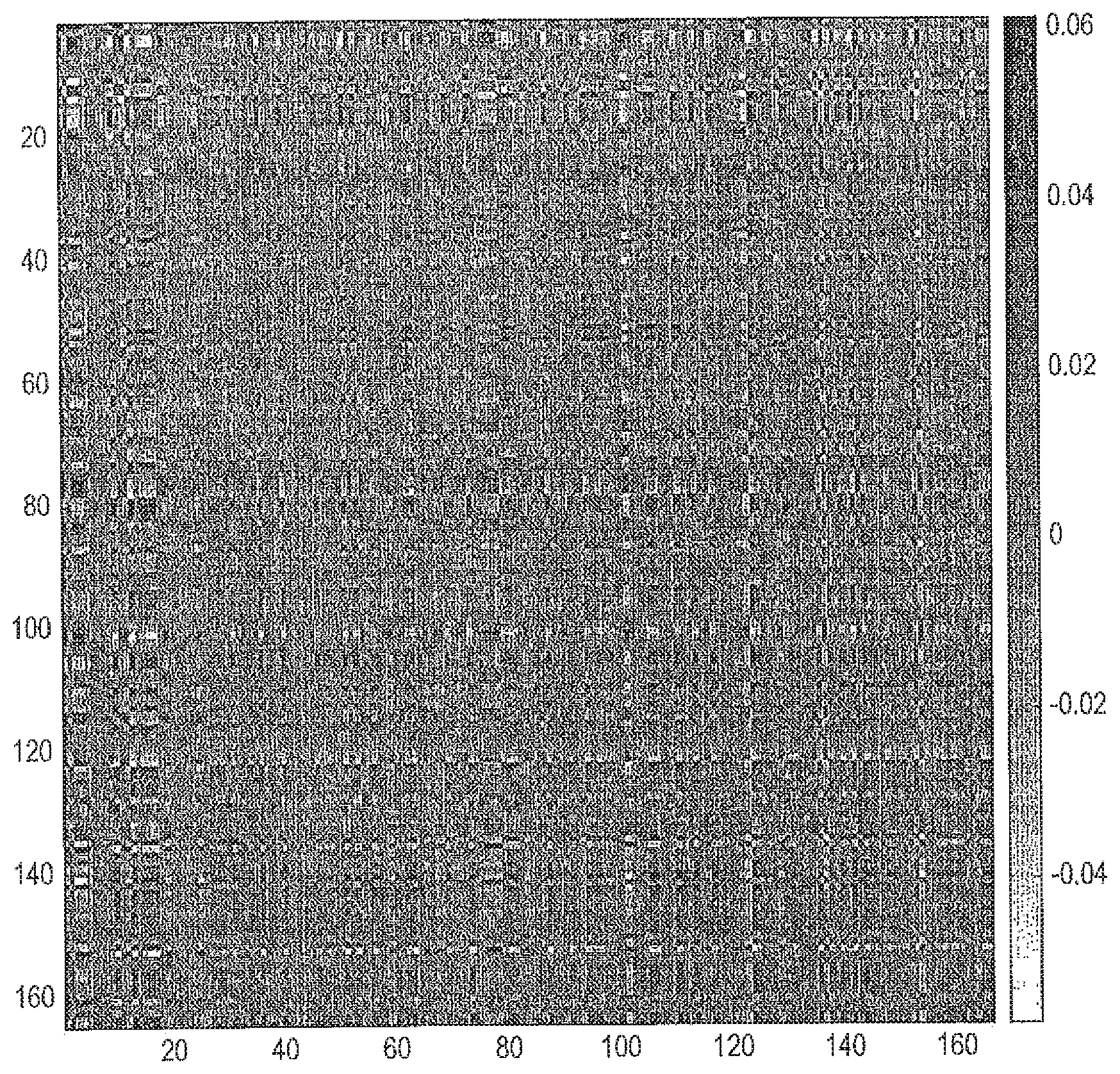
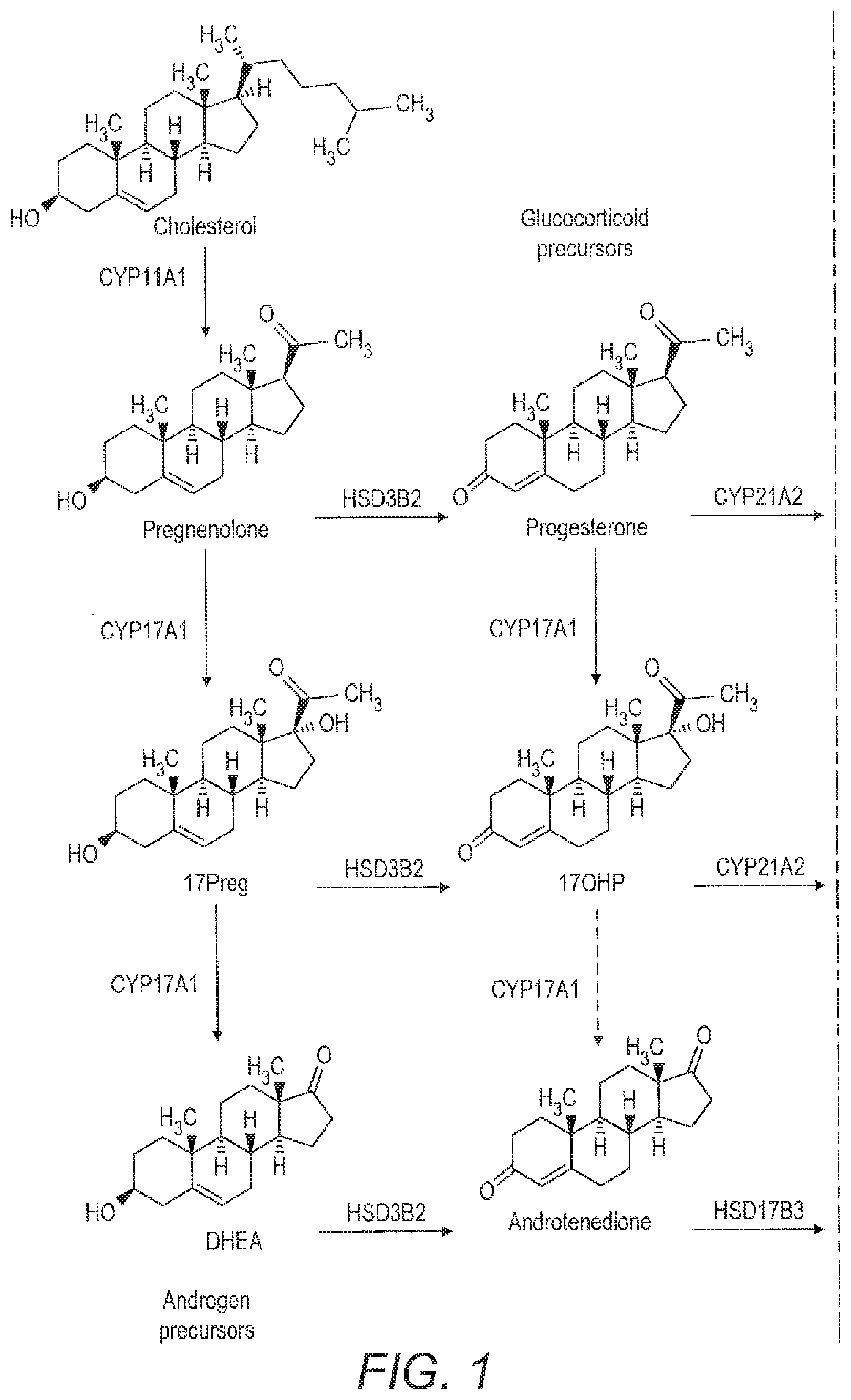
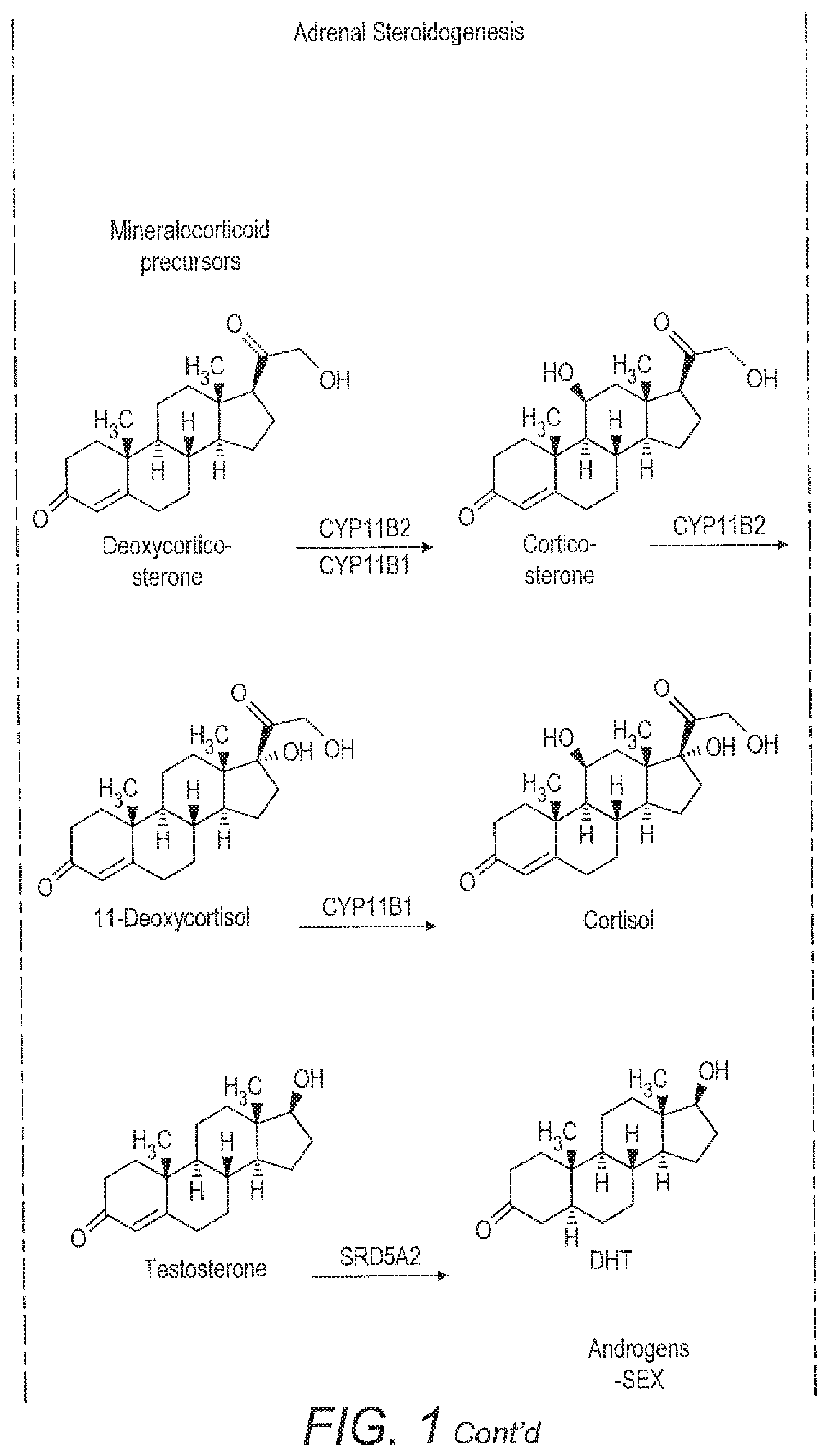
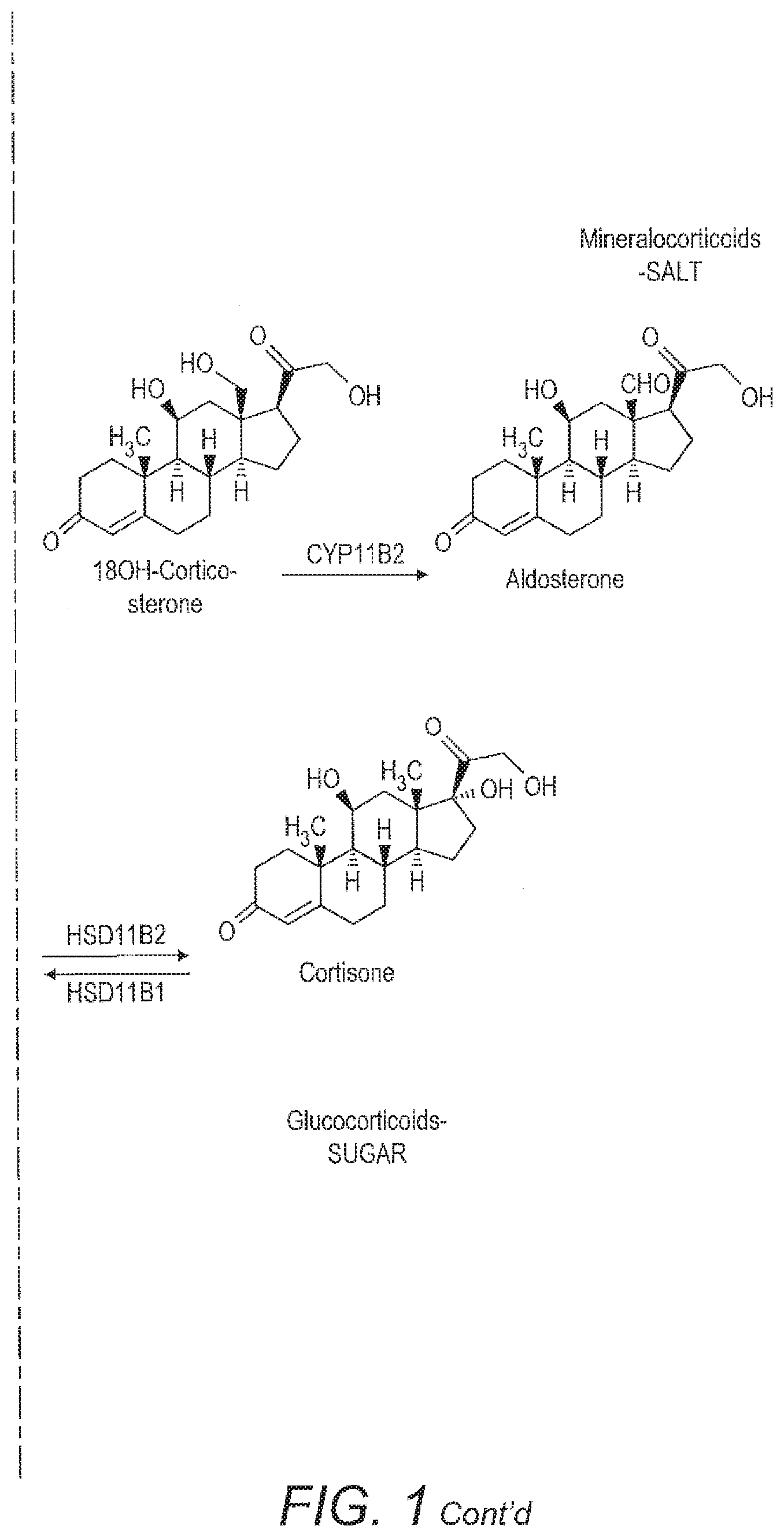

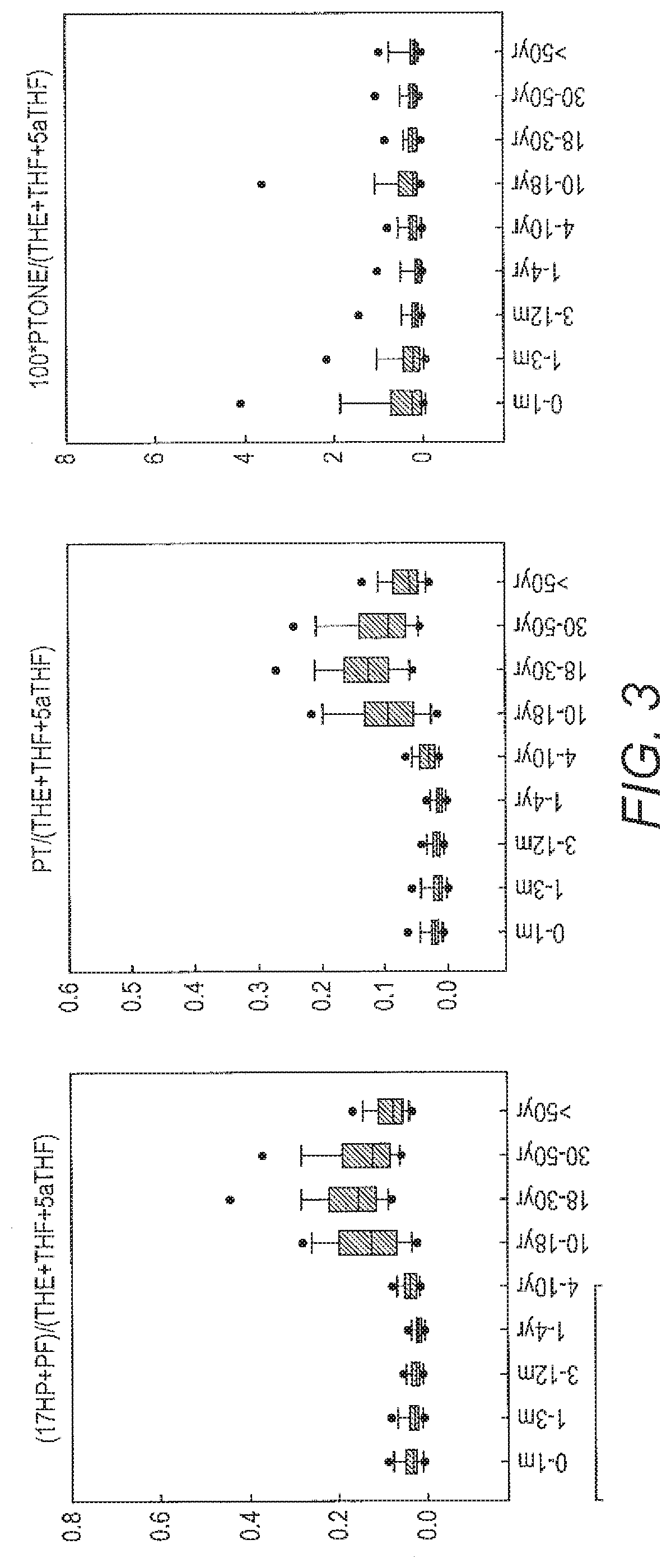

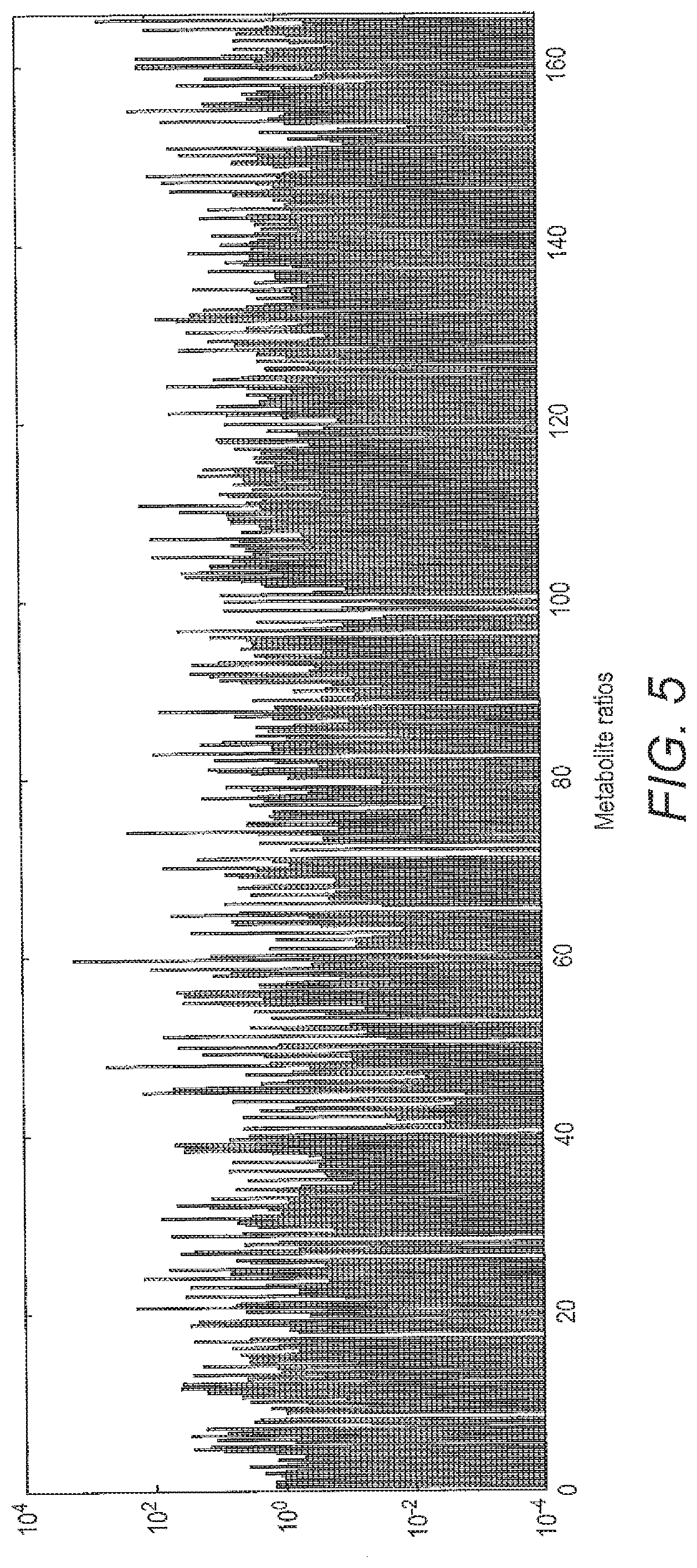
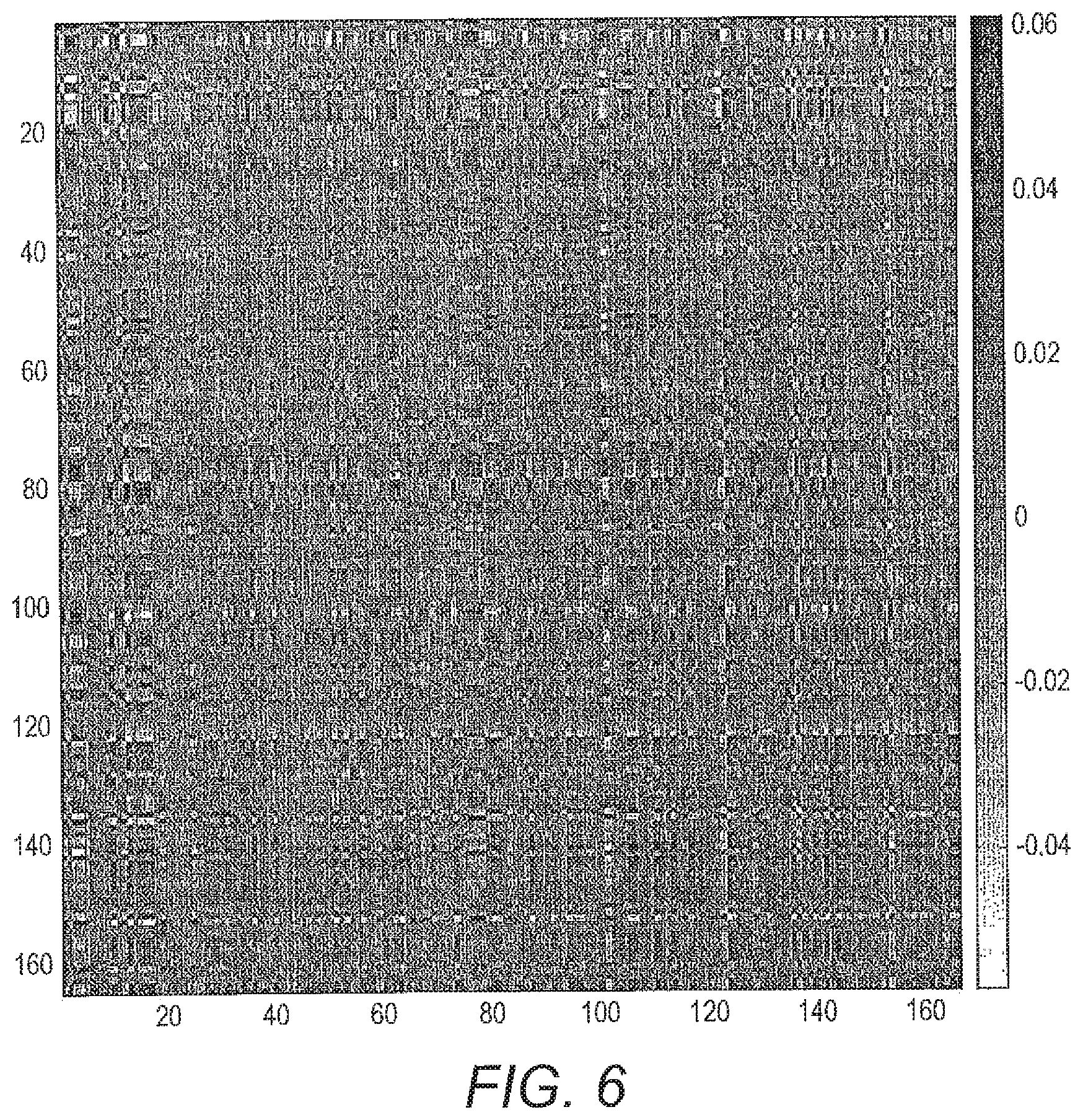
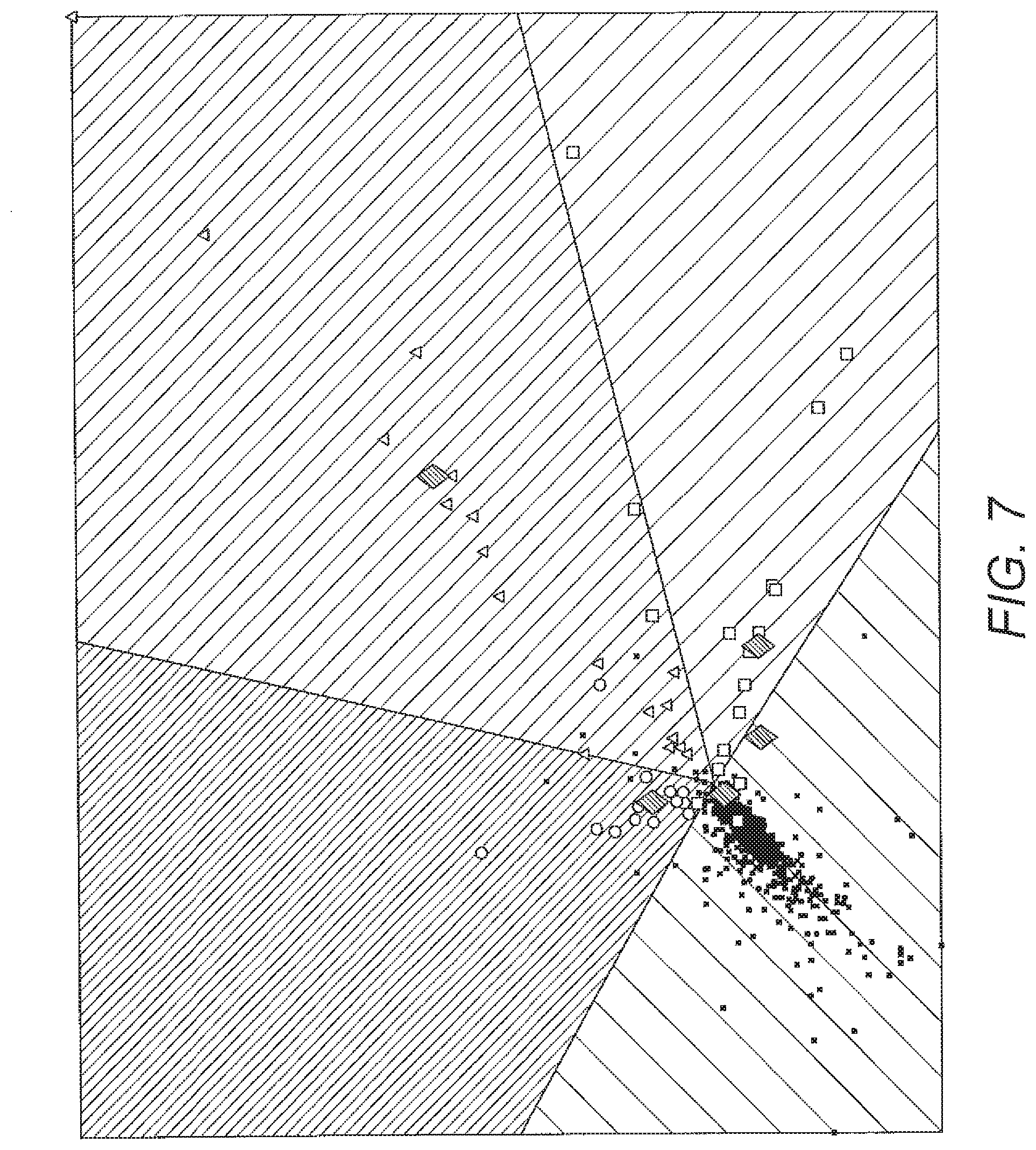

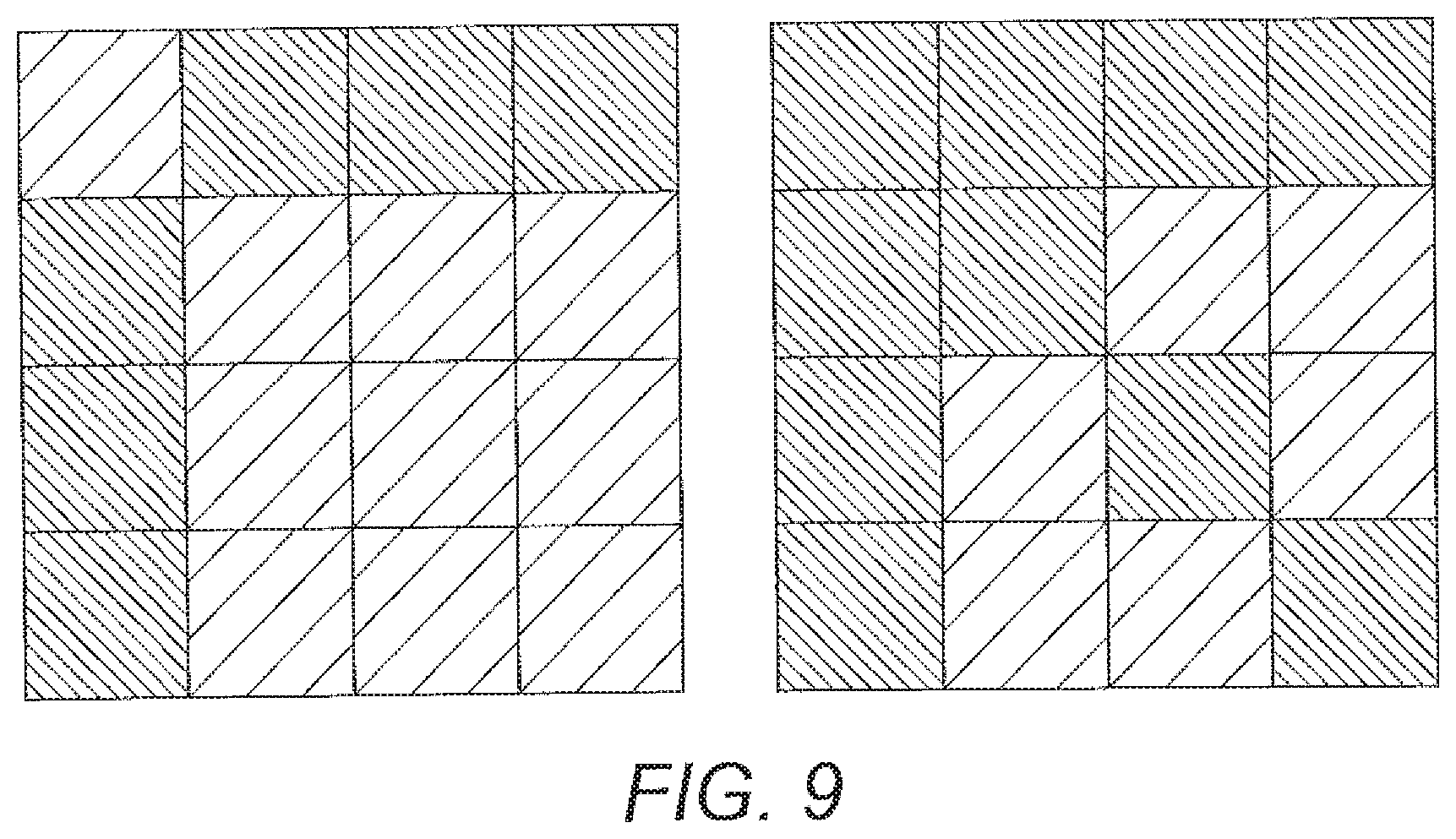
View All Diagrams
| United States Patent Application | 20190362857 |
| Kind Code | A1 |
| Bunte; Kerstin ; et al. | November 28, 2019 |
METHODS OF DISEASE CHARACTERISATION
Abstract
The invention provides a method of characterising a disease state comprising: (i) collecting metabolic data from a plurality of subjects; (ii) presenting the data as vectors with dimensions corresponding to different biomarkers: and (iii) weighting the importance of either individual dimensions, or the interplay among multiple dimensions when calculating angles of the vectors, such that there is a minimum variation of angle within a disease class and/or a maximum variation of angle compared to a different disease class. The invention also describes a method of identifying a disease state or following progression of a disease state in a subject comprising: (i) collecting metabolic data from the subject; (ii) presenting the data as vectors with dimensions corresponding to different biomarkers: and (iii) comparing two or more angles of vectors with a prototype vector and optionally at least one relevance matrix, to identify the presence of, or progression of, a disease state.
| Inventors: | Bunte; Kerstin; (Groningen, NL) ; Arlt; Wiebke; (Birmingham, GB) ; Tino; Peter; (Oldbury, GB) | ||||||||||
| Applicant: |
|
||||||||||
|---|---|---|---|---|---|---|---|---|---|---|---|
| Family ID: | 57234570 | ||||||||||
| Appl. No.: | 16/331794 | ||||||||||
| Filed: | September 7, 2017 | ||||||||||
| PCT Filed: | September 7, 2017 | ||||||||||
| PCT NO: | PCT/GB2017/052615 | ||||||||||
| 371 Date: | March 8, 2019 |
| Current U.S. Class: | 1/1 |
| Current CPC Class: | G16H 50/20 20180101; G16H 70/60 20180101; G16H 80/00 20180101 |
| International Class: | G16H 70/60 20060101 G16H070/60; G16H 80/00 20060101 G16H080/00 |
Foreign Application Data
| Date | Code | Application Number |
|---|---|---|
| Sep 9, 2016 | GB | 1615330.6 |
Claims
1. A method of determining a disease state for a disease in a disease class, the method comprising: (i) receiving metabolic data from a plurality of subjects, the metabolic data organized as vectors with dimensions corresponding to different biomarkers; (ii) weighting the importance of individual dimensions or the interplay among multiple dimensions when calculating angles of the vectors, the weighting including training a prototype vector for the disease to minimise variation of the angles of the vectors within the disease class, maximise variation of the angles of the vectors compared to angles of vectors corresponding to a different disease class, or a combination thereof, (iii) comparing the trained prototype vector to a vector of metabolic data corresponding to a patient; (iv) based on the comparison of the trained prototype vector of the disease to the vector of metabolic data corresponding to the patient, determining the disease state of the patient; and (v) transmitting the disease state of the patient to a user.
2. (canceled)
3. The method according to claim 1, wherein the vectors are weighted by at least one relevance matrix.
4-5. (canceled)
6. A method of determining a disease state for a disease in a disease class, the method comprising: (i) receiving metabolic data from; a patient, the metabolic data organized as a vector with dimensions corresponding to different biomarkers; (ii) comparing two or more angles of the vector with a prototype vector of the disease; (iii) based on the comparison of the prototype vector of the disease to the vector, determining the disease state of the patient; and (iv) transmitting the disease state of the patient to a user.
7. The method according to claim 6, wherein the vector corresponds to a precursor biomarker and the prototype vector corresponds to a metabolite of the precursor biomarker.
8. The method according to claim 6, further comprising detecting the biomarkers by mass spectrometry.
9. The method according to claim 6, wherein the disease state is a metabolic disease or an endocrine disease.
10. The method according to claim 9, wherein the disease is a disease of steroidogenesis.
11. (canceled)
12. The method according to claim 6, wherein comparing the two or more angles of the vector with the prototype vector of the disease includes Angle Learning Vector Quantitization (ALVQ).
13. (canceled)
14. A computer program product encoded on one or more non-transitory, computer storage media, the computer program product comprising instructions that, when performed by one or more computing devices, cause the one or more computing devices to perform operations comprising: (i) receiving metabolic data from a patient, the metabolic data organized as a vector with dimensions corresponding to different biomarkers; (ii) comparing two or more angles of the vector with a prototype vector of a disease; (iii) based on the comparison of the prototype vector of the disease to the vector, determining a disease state of the disease of the patient; and (iv) transmitting the disease state of the disease of the patient to a user.
15. An electronic device comprising: a processor; and a memory comprising instructions executable by the processor, the instructions when executed causing the processor to perform steps comprising (i) receiving metabolic data from a patient, the metabolic data organized as a vector with dimensions corresponding to different biomarkers, (ii) comparing two or more angles of the vector with a prototype vector of a disease, (iii) based on the comparison of the prototype vector of the disease to the vector, determining a disease state of the disease of the patient, and (iv) transmitting the disease state of the disease of the patient to a user.
16. The method according to claim 1, wherein determining the disease state of the patient includes following progression of the disease in the patient.
17. The method according to claim 1, wherein determining the disease state of the patient includes identifying a presence of the disease in the patient.
18. The method according to claim 1, wherein determining the disease state of the patient includes identifying a fingerprint of the disease state of the disease in the patient.
Description
[0001] The invention relates to a method of characterising a disease state, identifying a disease state or following the progression of a disease state, utilising vectors with dimensions corresponding to different biomarkers.
[0002] Due to improved biochemical sensor technology and biobanking in North America and Europe, the amounts of complex biomedical data are growing constantly. With the data also the demand for interpretable interdisciplinary analysis techniques increases. Further difficulties arise since biomedical data is often very heterogeneous, either due to the availability of measurements or individual differences in the biological processes. Urine steroid metabolomics is a novel biomarker tool for adrenal cortex function [1], WO 2010/092363, measured by gas chromatography-mass spectrometry (GC-MS), which is considered the reference standard for the biochemical diagnosis of inborn steroidogenic disorders. Steroidogenesis encompasses the complex process by which cholesterol is converted to biologically active steroid hormones. Inherited or inborn disorders of steroidogenesis result from genetic mutations which lead to defective production of any of the enzymes or a cofactor responsible for catalysing salt and glucose homeostasis, sex differentiation and sex specific development. Treatment involves replacing the deficient hormones which, if replaced adequately, will in turn suppress any compensatory up-regulation of other hormones that drive the disease process. Currently, up to 34 distinct steroid metabolite concentrations are extracted from a single GC-MS profile by automatic quantitation following selected-ion-monitoring (SIM) analysis, resulting in a 34 dimensional fingerprint vector. However, the interpretation of this fingerprint is difficult and requires enormous experience and expertise, which makes it a relatively inaccessible tool for most clinical endocrinologists.
[0003] The application describes a novel interpretable machine learning method for the computer-aided diagnosis of three conditions including the most prevalent, 21-hydroxylase deficiency (CYP21A2), and two other representative, but rare conditions, 5.alpha.-reductase type 2 deficiency (SRD5A2) and P450 oxidorectase deficiency (PORD). The data set contains a large collection of steroid metabolomes from over 800 healthy controls of varying age (including neonates, infants, children, adolescents and adults) and over 100 patients with newly diagnosed, genetically confirmed inborn steroidogenic disorders.
[0004] The data set and problem formulation comprises several computational difficulties. On average 8% to 13% of measurements from healthy control and patients respectively are missing or not detectable. The problem now arises because those measurements are not missing at random but systematically, since the data collection combines different studies and quantitation philosophy has changed over the years. Furthermore, the measurements are very heterogeneous. Neonates and infants naturally deliver less urine, with usually only a spot urine or nappy collection available, rather than an accurate 24-h urine. Moreover, the individual excretion amounts vary a lot due to maturation-dependent, natural adrenal development and peripheral factors; this affects even healthy controls but much more so patients with steroidogenic enzyme deficiencies. Moreover, some disease conditions are rare which poses an insuperable obstacle for state-of-the-art imputation methods for the missing values. To account for these difficulties the invention provides an interpretable prototype-based machine learning method using a dissimilarity between two metabolomic profiles based on the angle 6 between them calculated on the observed dimensions. Using the angles instead of distances has two principal advantages: (1) distances calculated in spaces of varying dimensionality (depending on the number of shared observed dimensions in two metabolomic fingerprints) do not share the same scale and (2) the angles naturally express the idea that only the proportional characteristics of the individual profiles matter.
[0005] The same approach may be used to identify or detect the disease states and a number of other different other diseases, by measuring the metabolic data from subjects. These diseases might include for example, diseases caused by bacterial or viral infections, and also additionally metabolic or endocrine diseases.
[0006] A first aspect of the invention provides a method of characterising a disease state comprising:
[0007] (i) collecting metabolic data from a plurality of subjects;
[0008] (ii) presenting the data as vectors with dimensions corresponding to different biomarkers: and
[0009] (iii) weighting the importance of either individual dimensions, or the interplay among multiple dimensions when calculating angles of the vectors, such that there is a minimum variation of angle within a disease class and/or a maximum variation of angle compared to a different disease class.
[0010] The weighting in step (iii) may be global (for all diseases) or local (specific for each disease state).
[0011] This identifies those biomarkers which are characteristic of the disease state.
[0012] Metabolic data may be obtained from a variety of different sources, including for example, tissue samples, blood, serum, plasma, urine, saliva, tears or cerebrospinal fluid. The sample may be analysed by any techniques generally known in the art to obtain the presence of, or amount of different compounds within that sample.
[0013] For example, the presence of a concentration or amount of different compounds may be determined by, for example, chromatography or mass spectrometry, such as gas chromatography-mass spectrometry or liquid chromatography-tandem mass spectrometry. This includes, for example, uPLC tandem mass spectrometers, which may be used in positive ion mode. This is described in, for example, WO 2010/092363.
[0014] This is known as metabolic data as it shows metabolites within the sample.
[0015] The data is then presented as vectors with dimensions corresponding to different biomarkers or compounds. Typically the method uses one or more prototype vectors for each class. These can be initialized randomly, close to the mean vector of the group or can be provided by an expert as an estimate of the likely typical vector. The algorithm will adapt the weighting of biomarkers during training. This allows, for example, commonly occurring biomarkers with little relevance to the disease state to be discounted. During training the prototypes and relevance matrix/matrices are compared to data from individuals with known disease states and changed in order to minimise the variation of angle between the disease class and simultaneously maximise the variation of angle between different disease classes.
[0016] Typically the applicant provides 3 levels of complexity depending on the number of parameters trained on. The weighting influence may be: [0017] 1. individual dimensions [0018] 2. additionally pairwise correlated dimensions via full metric tensor [0019] 3. localized metric tensors for each of the classes
[0020] The description below shows a typical formula used. In summary the form of the matrix R makes the difference, for 1. It is a diagonal matrix containing a vector of relevances, for 2. it is a matrix product of AA.sup.t and for 3. there are local matrices RC attached to the prototypes
[0021] Metabolic data of a subject can then be compared to the trained prototypes and relevance matrix/matrices to identify the presence of, or follow progression of a disease state in that subject. Besides this analytical analysis the method may provide visualisations for interpretable access to the model.
[0022] The method further provides comparing the trained prototype and optionally the relevance matrix/matrices to metabolic data of a subject, to identify the presence of, or follow progression of, a disease state in that subject.
[0023] The metabolic data of that subject may be presented as vectors with dimensions corresponding to different biomarkers which then may be compared to the prototype and optionally the relevance matrix/matrices, to identify the presence or absence of the disease state or follow progression of the disease state.
[0024] Methods of identifying a disease state or following progression of a disease state of a subject, is also provided comprising a method of identifying a disease state comprising:
[0025] (i) collecting metabolic data from the subject;
[0026] (ii) presenting the data as vectors with dimensions corresponding to different biomarkers: and
[0027] (iii) comparing two or more angles of vectors with a prototype vector and optionally at least one relevance matrix, to identify the presence of, or progression of, a disease state.
[0028] In a preferred aspect of the invention, the vector of a precursor biomarker is compared to a vector of a metabolite of the precursor biomarker.
[0029] For example, FIG. 1 shows adrenal steroidogenesis. A number of different diseases are associated with abnormalities in this pathway. These may be due to, for example, the altered function of a particular enzyme, which converts a precursor into a metabolite or mutations in such enzymes which affect the amount of metabolite produced. The diseases are usually accompanied by an excess of the pathway parts which are not affected by the deficiency because of the tailback of precursors. That excess in other parts of the pathway might however be individually different, which makes the problem complicated for manual analysis.
[0030] Accordingly, a precursor may be, for example, pregnenolone. A mutation or deletion of the enzyme CYP17A1 might result in a difference in the relative amounts or ratios of 17PREG or DHEA produced as metabolites. Alternatively, there may be a mutation in the pathway that produces aldosterone or cortisone. Accordingly, the metabolites compared with the pregnenolone precursor may be, for example, corticosterone or aldosterone or alternatively a member of the cortisone pathway such as cortisol or cortisone. Similarly, 11-deoxycortisol may be used as a precursor biomarker and compared to, for example, cortisol or cortisone to identify mutations in that part of the pathway. Similar analysis may be carried out in other complex pathways having a number of different metabolites to identify other metabolic or endocrine disease.
[0031] The disease state may be a metabolic disease state or an endocrine disease state. Alternatively, this may be used as a marker, for example, for a tumour, where the tumour produces a number of different metabolites. Most typically the disease is a disease affecting steroidogenesis. Such conditions include inborn steroidogenic disorders, with inactivating mutations in CYP21A2, CYP17A1, CYP11B, HSD3B2, POR, SRD5A2 and HSD17B3 resulting in a combination of adrenal insufficiency and disordered sex development. Similarly, the differentiation of benign from malignant adrenal tumours and the differentiation of different hormone excess states in both benign and malignant adrenal tumours may be aided by the method, which would similarly apply to other tumours of steroidogenically competent tissue e.g. arising from the gonads.
[0032] Methods of the invention may be used to identify a disease fingerprint which is diagnostic of the disease. That is, the method produces an indication of the markers, the presence or absence of which, is associated with the disease state. The presence or absence of those disease markers may be determined by alternative methods of detecting those markers. For example, the method may identify that the presence of two or three specific markers associated with the disease state. The markers may then be detected by an alternative detection system, for example, an immunoassay.
[0033] The diseases or conditions found or monitored can then be treated by a physician, for example, using treatments generally known in the art for the disease or conditions.
[0034] Computer implemented methods of detecting a disease state, following progression of a disease state or providing a fingerprint of a disease state comprising collecting metabolic data and performing the methods according to the invention, followed by transmitting information to a user of the disease state or the fingerprint are also provided. Computer readable medium instructions which when performed carry out the method of the invention are similarly provided.
[0035] Electronic devices having a precursor and a memory, the memory storing instructions which when carried out cause a precursor processor to carry out the method of the invention and transmit information regarding the disease state or fingerprint to the user, are also provided.
[0036] The methods utilised in the invention are generally known as Angle Learning Vector Quantization (Angle LVQ or ALVQ). This typically uses cosine dissimilarity instead of Euclidean distances. This makes the LVQ variant robust for classification of data containing missingness.
[0037] The method typically used is as follows.
[0038] We propose Angle Learning Vector Quantization (angle LVQ) as an extension to Generalized LVQ (GLVQ) and variants [4, 3, 5]. As in the original formulation we assume training data given as z-transformed vectorial measurements (zero mean, unit standard deviation) accompanied by labels {(xi,yi)}.sub.i=1.sup.N, and a user determined number of labelled protoypes {(w.sub.m, c(w.sub.m))}.sub.m=1.sup.M representing the classes. Classification is performed following a Nearest Prototype Classification (NPC) scheme, where a new vector is assigned the class label of its closest prototype.
[0039] Our approach differs from GLVQ by using an angle based similarity instead of the Euclidean distance. Both prototypes and relevances R are determined by a supervised training procedure minimizing the following cost function [7] calculated on the observed dimensions:
E = i = 1 N d i J - d i K d i J + d i K ##EQU00001##
[0040] Here the dissimilarity of each data sample x.sub.i with its nearest correct prototype with y.sub.i=c(w.sub.J) is defined by d.sub.i.sup.J and by d.sub.i.sup.K for the closest wrong prototype (y.sub.i.noteq.c(w.sub.K)). Now distances d.sub.i.sup.{J,K} are replaced by angle-based dissimilarities:
d i L = g .beta. ( x i Rw L T ( x i Rx i T ) w L Rw L T ) ( 1 ) With g .beta. ( b ) = exp { - .beta. ( b - 1 ) } - 1 exp ( 2 .beta. ) - 1 and L { J , K } ( 2 ) ##EQU00002##
[0041] Here, the exponential function g.sub..beta. with slope .beta. transforms the weighted dot product b=cos .THETA.R.di-elect cons.[-1, 1] to a dissimilarity .di-elect cons.[0, 1]. Finally, training is typically performed by minimizing the cost function E, which exhibits a large margin principle [4].
[0042] Dependent on the parametrization of the dissimilarity measured the complexity of the algorithm can be changed. In the case of R being the identity matrix the algorithm adapts the prototypes only. With R=diag(R) additionally to the prototypes the relevance of each dimension {r.sub.j}.sub.j=1.sup.D can be adapted. In case of R=AA.sup.T with A=.sup.D.times.b for b.ltoreq.D a linear transformation to the b-dimensional space is learned which is able to weight not only individual dimensions A.sub.ii, but also pairwise correlations of dimensions A.sub.ij. The most complex version of the algorithm introduces local dissimilarity measures R.sub.c=A.sub.cA.sub.c.sup.T (A.sub.c.di-elect cons..sup.D.times.b.sup.c) b attached to prototypes w.sub.c, which can adapt relevant dimensions important for the classification of individual classes.
A. Relevance Vector Version of Angle LVQ
[0043] To ensure positivity of the relevances we set r.sub.j=.alpha..sub.j.sup.2 and we optimize a.sub.j's collected in a vector a. We furthermore restrict r by a penalty term (1-.SIGMA..sub.j r.sub.i) added to E. Lastly we added a regularization term -.gamma..SIGMA..sub.j log r.sub.j to E to prevent oversimplification effects. Optimization can be performed for example by steepest gradient descent. The derivatives of equation 1 with R.sub.jj=a.sub.j.sup.2 and .parallel.v.parallel..sub.A= {square root over (.SIGMA..sub.m=1.sup.Mv.sub.m.sup.2a.sub.m.sup.2)} are
.differential. E .differential. w j = i = 1 N 2 d i k ( d i J + d i K ) 2 .differential. d i J .differential. w J and .differential. E .differential. w K = i = 1 N - 2 d i K ( d i J + d i K ) 2 .differential. d i J .differential. w J ( 3 ) .differential. g .beta. ( b ) .differential. b = - - .beta. exp { - .beta. b + .beta. } exp { 2 .beta. } - 1 ( 4 ) .differential. d L .differential. w { L , j } = .differential. g .beta. .differential. w L a j 2 ( x j m w { L , m } 2 a m 2 - m x m w { L , m } a m 2 ) x A w L A 3 ( 5 ) .differential. E .differential. a j = i = 1 N 2 d i K .differential. d i J .differential. a j - 2 d i J .differential. d i K .differential. a j ( d i J + d i K ) 2 ( 6 ) .differential. d L .differential. a j = a j 2 x j w { L , j } x A w L A - x j 2 m x m w { L , m } a j 2 x A 3 w L A - w j 2 m x m w { L , m } a m 2 x A w L A 3 ( 7 ) ##EQU00003##
B. Relevance matrix version angle LVQ
[0044] A similar extension of Generalized Matrix LVQ(GMLVQ)[5] we now use
[0045] R=AA.sup.T in the angle based similarity d.sub.i.sup.{J,K}:
d i L = g .beta. ( ( x i AA T w L T ) x i AA T x i T w L AA T w L T ) ( 8 ) ##EQU00004##
[0046] The derivatives of E (Eq 1) with .parallel.v.parallel..sub.A= (vAA.sup.Tv) are:
.differential. d L .differential. w L , = .differential. g .beta. .differential. w L xAA T w L A 2 - xAA T w L w L AA T ) x A w L A 3 ( 9 ) .differential. E .differential. A md = x m j A jd w { L , j } + w { L , m } j A jd x j x A w L A - xAA T w L . ( 9 ) [ x m j A jd x j x A 3 w L A + w { L , m } j A jd w { L , j } x A w L A 3 ] ( 10 ) ##EQU00005##
[0047] Where v.sub.{.,j} denotes dimension j of vector v.
C. Local Relevance Matrix Version of Angle LVQ
[0048] As proposed in Limited Rank Matrix LVQ we now use
[0049] R.sub.C=A.sub.CA.sub.C.sup.T in the angle based similarity d.sub.i.sup.{J,K}:
d i c = g .beta. ( ( x i AA T w L T ) x i A c A c T x i T w c A c A c T w c T ) ( 11 ) .differential. d c .differential. w c , = .differential. g .beta. .differential. w c xA c A c T w c A c 2 - xA c A c T w c w c A c A c T ) x A c w C A c 3 ( 12 ) .differential. E .differential. A { c , md } = x m j A { c , jd } w { c , j } + w { c , m } j A { c , jd } x j x A c w c A c - xA c A c T w c [ x m j A { c , jd } x j x A c 3 w c A c + w { c , m } j A { c , jd } w { c , j } x A c w c A c 3 ] ( 13 ) ##EQU00006##
[0050] Where v.sub.{.,ij} denotes dimension ij of matrix V.
[0051] In order to handle the imbalanced classes, a modification may be made to angle LVQ, referred to henceforth as cost-defined angle LVQ. Here explicit costs [6] was introduced so as to boost learning to differentiate between disease classes (all minority classes) and the healthy class (majority class).
[0052] We introduced a hypothetical cost matrix .GAMMA.=.gamma..sub.cp, with .SIGMA..sup.C.gamma..sub.cp=1. The rows correspond to the actual classes c and columns denote the predicted classes p. We include those costs in our cost function Eq. (1),
E ^ = i = 1 N .mu. ##EQU00007##
[0053] where c=yi is the class label of sample {tilde over (x)}.sub.i, n.sub.c defines the number of samples within that class and p being the predicted label (label of the nearest prototype). These hypothetical costs were highest for the most dangerous misclassification (misclassifying a patient to healthy), and for the correct classifications. The images above illustrate how the penalization scheme appears. The higher the cost, the greater the penalization for misclassification and reward for correct classification.
[0054] As a preferred alternative approach to dealing with imbalanced class problem, we tried oversampling of the minority samples. In this approach new training samples are artificially synthesized to increase the minority class. We have made and applied, for example, a variant of the original Synthetic Minority Over-sampling Technique (SMOTE) (proposed in [6]) which synthesized samples on the hypersphere (so adjust for the fact that angle LVQ classifies on the hypersphere). For this we used an important tool of Riemannian geometry, which is the exponential map [7, 8]. The exponential map has an origin M which defines the point for the construction of the tangent space T.sub.M of the manifold. Let P be a point on the manifold and {circumflex over (P)} a point on the tangent space then {circumflex over (P)}=Log.sub.MP, P=Exp.sub.M{circumflex over (P)} and d.sub.g (P, M)=d.sub.e ({circumflex over (P)}, M) with d.sub.g being the geodesic distance between the points on the manifold and d.sub.e being the Euclidean distance on the tangent space. The Log and Exp notations denote a mapping of points from the manifold to the tangent space and vice versa. In our case we present a point {tilde over (x)} from class c on the unit sphere with fixed length l{tilde over (x)}1 =1, which becomes the origin of the map and the tangent space (the centre of the hypersphere is the origin). We find k nearest neighbours {tilde over (x)}.sub..psi..di-elect cons.N.sub.{tilde over (x)} of the same class as selected sample {tilde over (x)} using the angle between the vectors .theta.=cos.sup.-1 ({tilde over (x)}>{tilde over (x)}.sub..psi.). Each random neighbour {tilde over (x)}.sub..psi. is now projected onto that tangent space using only the present features and the Log.sub.M transformation for spherical manifolds:
= .theta. ( sin ) .theta. ( x ~ .psi. - x ~ cos .theta. ) ##EQU00008##
[0055] Next, a synthetic sample is produced on the tangent space as before s={tilde over (x)}+.alpha.({circumflex over ({tilde over (x)})}.psi.-x). The new angle {circumflex over (.theta.)}=|s| is then used to project the new sample back to the unit hypersphere by the Exp.sub.M transformation:
s ^ = x ~ cos .theta. ^ + sin .theta. ^ .theta. ^ s ~ ^ ( 16 ) ##EQU00009##
[0056] This procedure is repeated with another sample from the class until the desired number of training samples is reached for that class.
[0057] For convenient visualization of 3 dimensional globe (on which the data from the different classes are plotted) Mollweide projection was typically used to flatten out the sphere into a map. Mollweide projection is given by
x = R 2 2 .pi. ( .lamda. - .lamda. 0 ) cos .theta. ##EQU00010## y = R 2 sin .theta. ##EQU00010.2## .theta. n + 1 = .theta. n - 2 .theta. n + sin 2 .theta. n - .pi.sin.phi. 2 + 2 cos 2 .theta. n ##EQU00010.3## .theta. 0 = .phi. ##EQU00010.4##
[0058] The invention will now be described by way of example only, with reference to the following figures:
[0059] FIG. 1 shows the adrenal steroidogensis pathway.
[0060] FIG. 2 shows the variability of different metabolites which are secreted by heathly individuals showing the complexity of the numbers of different compounds produced by heathly individuals.
[0061] FIG. 3 shows that the secretion of a number of different steroids is very variable with the age of the individual.
[0062] FIG. 4 shows the original 35 metabolite fingerprint dimensions representation.
[0063] FIG. 5 shows a representation of vectors for 165 dimensions build using problem specific expert knowledge and ANOVA.
[0064] FIG. 6 shows an example relevance matrix for angle LVQ found by cross-validation. Dark regions in the Relevance matrix R figure indicate important pairwise dimensions of ratios and white less important ones.
[0065] FIG. 7 shows an example 2D visualisation of the relevance matrix angle LVQ for different conditions. CYP21A2 (squares), POR (triangles) and SRD5A2 (circles) compared to prototypes (star) and healthy (dots). The diamonds correspond to some typical examples from each condition.
[0066] FIG. 8 shows relevance vector of an example angle LVQ model found by cross validation.
[0067] FIG. 9 shows representation of cost definitions using cost-defined angle LVQ. The dark blocks correspond to higher cost definitions.
[0068] FIG. 10 shows Boxplots showing performance criteria for local LVQ with a feature set (setting S8) and reduced feature set exemplified in Table 1 below; a) performance of the classifier for each of the performance settings during training; b) the performance of the classifier for each of the specific settings during validation; c) the performance of the classifier for each of the specific settings during generalisation.
[0069] FIG. 11 shows projection of data classified by ALVQ global matrix with dimension 2 and 3: a) Projection of data prints one of the models of ALVQ with 2D global matrix with cost definitions; b) 3D projection with cost dimensions.
[0070] FIG. 12 costs projection of classified data on a sphere and its corresponding map projection: a) projection of data classified by one of the models of ALVQ with 3D global matrix of cost projections in b) in map projection; c) projection of data (seen and unseen) classified by one of the models of ALVQ with 3D global matrix with cost projections and d) in map projection.
[0071] FIG. 13 shows visualisation of 6-class classification by geodesic SMOTE (100% oversampling) coupled with ALVQ with .beta.=1 dimension=3, global matrix: a) projection of data prints from classification by one of the models of ALVQ with 2D global matrix and b) Mollweide projection; c) projection of only the data prints from the classification by the model used in a) for easier visualisation.
[0072] FIG. 14 shows boxplots for the performance criteria described below for the local ALVQ with full feature set for 4 class problem and 6 class problem; a) the performance of the classifier for each of the specified settings during training; b) the performance of the classified for each of the specified setting during validation.
[0073] FIG. 2 shows that a variety of metabolites which are secreted by healthy individuals and FIG. 3 shows they are produced in different amounts depending on age of the subject. This demonstrates the complexity of this data domain and demonstrates some of the problems which the Applicant sought to overcome
[0074] In the Example, urine samples were measured and in the prototype the applicant started to work with the 34 dim vector of metabolites acquired by automatic quantitation of the spectrum. In the first experiments the starting dimension corresponded to:
[0075] ANDROS, ETIO, DHEA, 16.alpha.-OH-DHEA, 5-PT, 5-PD, Pregnadienol, THA, 5.alpha.-THA, THB, 5.alpha.-THB, 3.alpha.5.beta.-THALDO, TH-DOC, 5.alpha.-TH-DOC, PD, 3.alpha.5.alpha.-17HP, 17HP, PT, PTONE, THS, Cortisol, 6.beta.-OH-F, THF, 5.alpha.-THF, .alpha.-cortol, .beta.-cortol, 11.beta.-OH-AN, 11.beta.-OH-ET, Cortisone, THE, .alpha.-cortolone, .beta.-cortolone, 11-OXO-Et, 18-OH-THA, These correspond to metabolites in the Adrenal steroidogenesis pathway summarised in FIG. 1.
TABLE-US-00001 No. Abbreviation Common name Chemical name Metabolite of Androgen metabolites 1 An/ANDROS Androsterone 5.alpha.-androstan-3a-ol- Androstenedione, 17-one testosterone, 5a- dihydrotestosterone 2 Etio Etiocholanolone 5.beta.-androstan-3a-ol- Androstenedione, 17-one testosterone Androgen precursor metabolites 3 DHEA Dehydroepi- 5-androsten-3.beta.-ol- DHEA + DHEA androsterone 17-one sulfate (DHEAS) 4 16.alpha.-OH- 16.alpha.-hydroxy- 5-androstene- DHEA + DHEAS DHEA DHEA 3.beta.,16.alpha.-diol-17-one 5 5-PT 5-pregnene-3.beta.,17, 20.alpha.-triol 6 5-PD 5-pregnene-3.beta., Pregnenolone 20.alpha.-diol and 5, 17, (20)-pregnadien- 3.beta.-ol Mineralocorticoid metabolites 7 THA Tetrahydro-11- 5.beta.-pregnane-3.alpha., Corticosterone, 11- dehydro- 21-diol, 11, 20- dehydro- corticosterone dione corticosterone 8 5.alpha.-THA 5.alpha.-tetrahydro-11- 5.alpha.-pregnane-3.alpha., Corticosterone, 11- dehydro- 21-diol-11, 20- dehydrocorticosterone corticosterone dione 9 THB Tetrahydro- 5.beta.-pregnane-3.alpha., Corticosterone corticosterone 11.beta., 21-triol-20-one 10 5.alpha.-THB 5.alpha.-tetrahydro- 5.alpha.-pregnane-3.alpha., Corticosterone corticosterone 11.beta., 21-triol-20-one 11 3.alpha.5.beta.- Tetrahydro- 5.beta.-pregnane-3.alpha., Aldosterone THALDO aldosterone 11.beta., 21-triol-20- one-18-al Mineralocorticoid precursor metabolites 12 THDOC Tetrahydro-11- 5.beta.-pregnane-3.alpha., 11- deoxycorticosterone 21-diol-20-one deoxycorticosterone 13 5.alpha.-THDOC 5.alpha.-tetrahydro-11- 5.alpha.-pregnane-3.alpha., 11- deoxycorticosterone 21-diol-20-one deoxycorticosterone Glucocorticoid precursor metabolites 14 PD Pregnanediol 5.beta.-pregnane-3.alpha., Progesterone 20a-diol 15 3.alpha.5.alpha.-17HP 3.alpha., 5.alpha.-17-hydroxy- 5.alpha.-pregnane-3.alpha., 17-hydroxy- pregnanolone 17.alpha.-diol-20-one progesterone 16 17HP 17-hydroxy- 5.beta.-pregnane-3.alpha., 17-hydroxy- pregnanolone 17.alpha.,-diol-20-one progesterone 17 PT Pregnanetriol 5.beta.-pregnane-3.alpha., 17-hydroxy- 17.alpha., 20.alpha.-triol progesterone 18 PTONE Pregnanetriolone 5.beta.-pregnane-3.alpha., 17, 21-deoxycortisol 20.alpha.-triol-11-one 19 THS Tetrahydro-11- 5.beta.-pregnane-3.alpha., 17, 11-deoxycortisol deoxycortisol 21-triol-20-one Glucocorticoid metabolites 20 F Cortisol 4-pregnene-11.beta., 17, Cortisol 21-triol-3, 20-dione 21 6.beta.-OH--F 6.beta.-hydroxy-cortisol 4-pregnene-6.beta., 11.beta., Cortisol 17, 21-tetrol-3, 20- dione 22 THF Tetrahydrocortisol 5.beta.-pregnane-3.alpha., Cortisol 11.beta., 17, 21-tetrol- 20-one 23 5.alpha.-THF 5.alpha.- 5.alpha.-pregnane-3.alpha., Cortisol tetrahydrocortisol 11.beta., 17, 21-tetrol- 20-one 24 .alpha.-cortol .alpha.-cortol 5.alpha.-pregnan-3.alpha., Cortisol 11.beta., 17, 20.beta., 21- pentol 25 .beta.-cortol .beta.-cortol 5.beta.-pregnan-3.alpha., Cortisol 11.beta., 17, 20.beta., 21- pentol 26 11b-OH-An 11.beta.-hydroxy- 5.alpha.-androstane-3.alpha., Cortisol (+ androsterone 11.beta.-diol-17-one Androgens) 27 11b-OH--Et 11b-hydroxy- 5.beta.-androstane-3.alpha., Cortisol (+ etiocholanolone 11.beta.-diol-17-one Androgens) 28 E Cortisone 4-pregnene-17.alpha., Cortisol 21-diol-3, 11, 20- trione 29 THE Tetrahydrocortisone 5.beta.-pregnene-3.alpha., 17, Cortisol 21-triol-11, 20- dione 30 .alpha.-cortolone .alpha.-cortolone 5.beta.-pregnane-3.alpha., 17, Cortisol 20.alpha., 21-tetrol-11- one 31 .beta.-cortolone .beta.-cortolone 5.beta.-pregnane-3.alpha., 17, Cortisol 20.beta., 21-tetrol-11- one 32 11-oxo-Et 11-oxo- 5.beta.-androstan-3.alpha.-ol- Cortisol (+ etiocholanolone 11, 17-dione Androgens)
[0076] Typical examples for the disease types:
[0077] Record Nb 470 Age 18.00 condition Healthy:
[0078] 482.63, 815.52, 56.03, 176.66, 143.00, 107.09, NaN, 76.43, 41.25, 73.64, 132.85, NaN, NaN, NaN, 149.15, NaN, 64.21, 205.22, 4.90, 43.31, 29.31, NaN, 705.63, 421.75, 114.99, 246.09, 225.67, 214.90, 36.17, 2051.85, 716.78, 307.66, 497.61, NaN,
[0079] Record Nb 391 Age 2.56 condition Healthy:
[0080] 5.00, 5.00, 9.00, 8.00, 8.00, 57.00, 23.00, 33.00, 35.00, 30.00, 70.00, 33.00, 1.00, 8.00, 9.00, 1.00, 17.00, 14.00, 1.00, 28.00, 20.00, 38.00, 193.00, 327.00, 11.00, 134.00, 21.00, 7.00, 28.00, 693.00, 42.00, 121.00, 16.00, 1530.00,
[0081] Record Nb 881 Age NaN condition CYP21A2:
[0082] 222.00, 17.00, 100.00, 20187.00, 50.00, 599.00, 1034.00, 128.00, 0.00, 0.00, 0.00, 75.00, 341.00, 115.00, 102.00, 127.00, 628.00, 292.00, 521.00, 49.00, 122.00, 257.00, 130.00, 224.00, 240.00, 112.00, 498.00, 45.00, 788.00, 80.00, 13.00, 220.00, 545.00, 0.00,
[0083] Record Nb 895 Age 16.45 condition POR:
[0084] 553.50, 769.50, 230.00, 15.00, 1089.00, 4607.00, 7403.00, 1466.00, 225.50, 451.50, 1038.50, 21.00, 146.00, 34.00, 4523.00, 94.50, 1877.50, 3923.00, 504.50, 89.50, 60.50, 7.50, 663.50, 390.00, 27.50, 298.50, 165.50, 81.00, 43.50, 5101.00, 423.00, 720.50, 188.50, 194.00,
[0085] Record Nb 917 Age 7.75 condition SRD5A2:
[0086] 83.00, 446.00, 326.00, 19.00, 119.00, 389.00, 47.00, 342.00, 17.00, 253.00, 232.00, NaN, 14.00, 52.00, 166.00, 2.00, 71.00, 306.00, 8.00, 120.00, 94.00, 184.00, 1076.00, 9.00, 89.00, 281.00, 85.00, 184.00, 111.00, 4044.00, 962.00, 521.00, 321.00, 106.00,
[0087] From these samples we build ratio vectors by upstream pathway grouping of metabolites to reduce the 34.sup.2 possibilities followed by ANOVA for each condition vs healthy: This leads to 165 potential interesting ratios of the original metabolites:
[0088] THS/Cortisol, THS/Cortisone, ANDROS/11.beta.-OH-ANDRO, THS/11.beta.-OH-ANDRO, THS/PT-ONE, THS/6.beta.-OH-F, 5-PT/PT-ONE, TH-DOC/Cortisol, TH-DOC/PT-ONE, TH-DOC/Cortisone, 5-PT/Cortisol, PT/PT-ONE, 5-PT/Cortisone, TH-DOC/643-OH-F, ETIO/11.beta.-OH-ANDRO, 5-PT/11.beta.-OH-ANDRO, PT/11.beta.-OH-ANDRO, TH-DOC/11.beta.-OH-ANDRO, PD/PT-ONE, DHEA/11.beta.-OH-ANDRO, 18-OH-THA/16.alpha.-OH-DHEA, PT-ONE/16.alpha.-OH-DHEA, PD/11.beta.-OH-ANDRO, 5-PT/6.beta.-OH-F, PT/Cortisol, THS/16.alpha.-OH-DHEA, 18-OH-THA/6.beta.-OH-F, 3a5.beta.-THALDO/16.alpha.-OH-DHEA, 18-OH-THA/Cortisone, Cortisol/16.alpha.-OH-DHEA, 18-OH-THA/Cortisol, .beta.-cortolone/16.alpha.-OH-DHEA, PT/.beta.-cortol, PT/.beta.-cortolone, PT/THE, 11-OXO-Et/THE, PT/THF, PT/5-.alpha.-THF, THE/11-.beta.-OH-ANDRO, .beta.-cortol/11.beta.-OH-ANDRO, TH-DOC/THE, PT-ONE/-.beta.-cortol, PT-ONE/-.beta.-cortolone, PT-ONE/THE, THE/ANDROS, PT-ONE/5.alpha.-THF, PT-ONE/THF, PT/6.beta.-OH-F, PT-ONE/.alpha.-cortol, PT-ONE/.alpha.-cortolone, PT-ONE/6.beta.-OH-F, PT-ONE/11.beta.-OH-ANDRO, TH-DOC/.beta.-cortolone, 5.alpha.-THA/PT, 5.alpha.-THA/PT-ONE, THA/PT-ONE, PT-ONE/ANDROS, PT-ONE/11.beta.-OH-ETIO, 18-OH-THA/PT, 18-OH-THA/PT-ONE, TH-DOC/5-.alpha.-THF, PD/THE, TH-DOC/.alpha.-cortolone, 17-HP/.beta.-cortol, 17-HP/.alpha.-cortolone, 17-HP/THE, 17-HP/.beta.-cortolone, 17-HP/THF, 17-HP/5.alpha.-THF, 17-HP/.alpha.-cortol, 17-HP/THS, TH-DOC/18-OH-THA, 5.alpha.-THA/17-HP, 17-HP/6.beta.-OH-F, 17-HP/ANDROS, Cortisone/11-.beta.-OH-ANDRO, TH-DOC/.beta.-cortol, 5-.alpha.-THF/11.beta.-OH-ANDRO, PT/ANDROS, TH-DOC/5.alpha.-THA, THF/11-.beta.-OH-ANDRO, 17-HP/11.beta.-OH-ANDRO, 18-OH-THA/17-HP, 17-HP/PT-ONE, PT-ONE/11-OXO-Et, 11-OXO-Et/.beta.-cortolone, TH-DOC/.alpha.-cortol, 18-OH-THA/11.beta.-OH-ANDRO, TH-DOC/THF, 5-PT/THE, PT-ONE/Cortisol, 17-HP/11-.beta.-OH-ETIO, PT/.alpha.-cortolone, 5.alpha.-THB/.alpha.-cortolone, THA/5-PT, 5-PT/THS, 18-OH-THA/.alpha.-cortolone, 18-OH-THA/THE, TH-DOC/THS, TH-DOC/3a5.beta.-THALDO, 18-OH-THA/THF, THB/17-HP, THB/PT-ONE, THF/11-OXO-Et, PT/Cortisone, Cortisone/16.alpha.-OH-DHEA, THA/16.alpha.-OH-DHEA, THB/5-PT, .beta.-cortolone/11.beta.-OH-ANDRO, 5.alpha.-THB/.alpha.-cortol, PT/.alpha.-cortol, 17-HP/DHEA, 5-PT/DHEA, PT/DHEA, .beta.-cortol/DHEA, PD/17-HP, THA/17-HP, THA/11.beta.-OH-ANDRO, 5-PT/.beta.-cortolone, TH-DOC/5-PT, PT/11.beta.-OH-ETIO, 5.alpha.-THB/5-PT, THB/11.beta.-OH-ANDRO, THA/.alpha.-cortol, THA/.alpha.-cortolone, 5.alpha.-TH-DOC/3a5.beta.-THALDO, THB/PT, THA/Cortisone, 18-OH-THA/5.alpha.-THF, 5.alpha.-THB/5.alpha.-THF, THS/DHEA, THE/DHEA, .beta.-cortolone/DHEA, THA/.beta.-cortolone, PD/DHEA, THA/PT, 5.alpha.-THA/3a5.beta.-THALDO, 5.alpha.-THB/11.beta.-OH-ANDRO, THA/Cortisol, THB/Cortisol, THB/Cortisone, 6.beta.-OH-Cortisol/11.beta.-OH-ANDRO, THB/.alpha.-cortol, PT-ONE/Cortisone, PD/PT, PT/THS, PD/11.beta.-OH-ETIO, 18-OH-THA/11-OXO-Et, THA/.beta.-cortol, 17-HP/Cortisol, 5.alpha.-THB/3a5.beta.-THALDO, THB/THF, 3a5.beta.-THALDO/17-HP, THB/6.beta.-OH-F, THA/6.beta.-OH-F, .alpha.-cortolone/DHEA, THB/DHEA, 3a5.beta.-THALDO/PT-ONE, 18-OH-THA/.beta.-cortolone, 5.alpha.-THB/6.beta.-OH-F, 18-OH-THA/.alpha.-cortol, 5.alpha.-THA/5-PT, 5.alpha.-THB/PT, PD/Cortisone, PD/6.beta.-OH-F
[0089] The same samples as above will now become 165 dim ratio vectors:
[0090] 1.48, 1.20, 2.14, 0.19, 8.84, NaN, 29.18, NaN, NaN, NaN, 4.88, 41.88, 3.95, NaN, 3.61, 0.63, 0.91, NaN, 30.44, 0.25, NaN, 0.03, 0.66, NaN, 7.00, 0.25, NaN, NaN, NaN, 0.17, NaN, 1.74, 0.83, 0.67, 0.10, 0.24, 0.29, 0.49, 9.09, 1.09, NaN, 0.02, 0.02, 0.00, 4.25, 0.01, 0.01, NaN, 0.04, 0.01, NaN, 0.02, NaN, 0.20, 8.42, 15.60, 0.01, 0.02, NaN, NaN, NaN, 0.07, NaN, 0.26, 0.09, 0.03, 0.21, 0.09, 0.15, 0.56, 1.48, NaN, 0.64, NaN, 0.13, 0.16, NaN, 1.87, 0.43, NaN, 3.13, 0.28, NaN, 13.10, 0.01, 1.62, NaN, NaN, NaN, 0.07, 0.17, 0.30, 0.29, 0.19, 0.53, 3.30, NaN, NaN, NaN, NaN, NaN, 1.15, 15.03, 1.42, 5.67, 0.20, 0.43, 0.51, 1.36, 1.16, 1.78, 1.15, 2.55, 3.66, 4.39, 2.32, 1.19, 0.34, 0.46, NaN, 0.95, 0.93, 0.33, 0.66, 0.11, NaN, 0.36, 2.11, NaN, 0.31, 0.77, 36.62, 5.49, 0.25, 2.66, 0.37, NaN, 0.59, 2.61, 2.51, 2.04, NaN, 0.64, 0.14, 0.73, 4.74, 0.69, NaN, 0.31, 2.19, NaN, 0.10, NaN, NaN, NaN, 12.79, 1.31, NaN, NaN, NaN, NaN, 0.29, 0.65, 4.12, NaN, [0091] 1.40, 1.00, 0.24, 1.33, 28.00, 0.74, 8.00, 0.05, 1.00, 0.04, 0.40, 14.00, 0.29, 0.03, 0.24, 0.38, 0.67, 0.05, 9.00, 0.43, 191.25, 0.12, 0.43, 0.21, 0.70, 3.50, 40.26, 4.12, 54.64, 2.50, 76.50, 15.12, 0.10, 0.12, 0.02, 0.02, 0.07, 0.04, 33.00, 6.38, 0.00, 0.01, 0.01, 0.00, 138.60, 0.00, 0.01, 0.37, 0.09, 0.02, 0.03, 0.05, 0.01, 2.50, 35.00, 33.00, 0.20, 0.14, 109.29, 1530.00, 0.00, 0.01, 0.02, 0.13, 0.40, 0.02, 0.14, 0.09, 0.05, 1.55, 0.61, 0.00, 2.06, 0.45, 3.40, 1.33, 0.01, 15.57, 2.80, 0.03, 9.19, 0.81, 90.00, 17.00, 0.06, 0.13, 0.09, 72.86, 0.01, 0.01, 0.05, 2.43, 0.33, 1.67, 4.12, 0.29, 36.43, 2.21, 0.04, 0.03, 7.93, 1.76, 30.00, 12.06, 0.50, 3.50, 4.12, 3.75, 5.76, 6.36, 1.27, 1.89, 0.89, 1.56, 14.89, 0.53, 1.94, 1.57, 0.07, 0.12, 2.00, 8.75, 1.43, 3.00, 0.79, 0.24, 2.14, 1.18, 4.68, 0.21, 3.11, 77.00, 13.44, 0.27, 1.00, 2.36, 1.06, 3.33, 1.65, 1.50, 1.07, 1.81, 2.73, 0.04, 0.64, 0.50, 1.29, 95.62, 0.25, 0.85, 2.12, 0.16, 1.94, 0.79, 0.87, 4.67, 3.33, 33.00, 12.64, 1.84, 139.09, 4.38, 5.00, 0.32, 0.24, [0092] 0.40, 0.06, 0.45, 0.10, 0.09, 0.19, 0.10, 2.80, 0.65, 0.43, 0.41, 0.56, 0.06, 1.33, 0.03, 0.10, 0.59, 0.68, 0.20, 0.20, 0.00, 0.03, 0.20, 0.19, 2.39, 0.00, 0.00, 0.00, 0.00, 0.01, 0.00, 0.01, 2.61, 1.33, 3.65, 6.81, 2.25, 1.30, 0.16, 0.22, 4.26, 4.65, 2.37, 6.51, 0.36, 2.33, 4.01, 1.14, 2.17, 40.08, 2.03, 1.05, 1.55, 0.00, 0.00, 0.25, 2.35, 11.58, 0.00, 0.00, 1.52, 1.27, 26.23, 5.61, 48.31, 7.85, 2.85, 4.83, 2.80, 2.62, 12.82, NaN, 0.00, 2.44, 2.83, 1.58, 3.04, 0.45, 1.32, NaN, 0.26, 1.26, 0.00, 1.21, 0.96, 2.48, 1.42, 0.00, 2.62, 0.62, 4.27, 13.96, 22.46, 0.00, 2.56, 1.02, 0.00, 0.00, 6.96, 4.55, 0.00, 0.00, 0.00, 0.24, 0.37, 0.04, 0.01, 0.00, 0.44, 0.00, 1.22, 6.28, 0.50, 2.92, 1.12, 0.16, 0.20, 0.26, 0.23, 6.82, 6.49, 0.00, 0.00, 0.53, 9.85, 1.53, 0.00, 0.16, 0.00, 0.00, 0.49, 0.80, 2.20, 0.58, 1.02, 0.44, 0.00, 0.00, 1.05, 0.00, 0.00, 0.52, 0.00, 0.66, 0.35, 5.96, 2.27, 0.00, 1.14, 5.15, 0.00, 0.00, 0.12, 0.00, 0.50, 0.13, 0.00, 0.14, 0.00, 0.00, 0.00, 0.00, 0.00, 0.13, 0.40,
[0093] 1.48, 2.06, 3.34, 0.54, 0.18, 11.93, 2.16, 2.41, 0.29, 3.36, 18.00, 7.78, 25.03, 19.47, 4.65, 6.58, 23.70, 0.88, 8.97, 1.39, 12.93, 33.63, 27.33, 145.20, 64.84, 5.97, 25.87, 1.40, 4.46, 4.03, 3.21, 48.03, 13.14, 5.44, 0.77, 0.04, 5.91, 10.06, 30.82, 1.80, 0.03, 1.69, 0.70, 0.10, 9.22, 1.29, 0.76, 523.07, 18.35, 1.19, 67.27, 3.05, 0.20, 0.06, 0.45, 2.91, 0.91, 6.23, 0.05, 0.38, 0.37, 0.89, 0.35, 6.29, 4.44, 0.37, 2.61, 2.83, 4.81, 68.27, 20.98, 0.75, 0.12, 250.33, 3.39, 0.26, 0.49, 2.36, 7.09, 0.65, 4.01, 11.34, 0.10, 3.72, 2.68, 0.26, 5.31, 1.17, 0.22, 0.21, 8.34, 23.18, 9.27, 2.46, 1.35, 12.17, 0.46, 0.04, 1.63, 6.95, 0.29, 0.24, 0.89, 3.52, 90.18, 2.90, 97.73, 0.41, 4.35, 37.76, 142.65, 8.16, 4.73, 17.06, 1.30, 2.41, 0.78, 8.86, 1.51, 0.13, 48.43, 0.95, 2.73, 53.31, 3.47, 1.62, 0.12, 33.70, 0.50, 2.66, 0.39, 22.18, 3.13, 2.03, 19.67, 0.37, 10.74, 6.27, 24.23, 7.46, 10.38, 0.05, 16.42, 11.60, 1.15, 43.83, 55.84, 1.03, 4.91, 31.03, 49.45, 0.68, 0.01, 60.20, 195.47, 1.84, 1.96, 0.04, 0.27, 138.47, 7.05, 0.21, 0.26, 103.98, 603.07,
[0094] 1.28, 1.08, 0.98, 1.41, 15.00, 0.65, 14.88, 0.15, 1.75, 0.13, 1.27, 38.25, 1.07, 0.08, 5.25, 1.40, 3.60, 0.16, 20.75, 3.84, 5.58, 0.42, 1.95, 0.65, 3.26, 6.32, 0.58, NaN, 0.95, 4.95, 1.13, 27.42, 1.09, 0.59, 0.08, 0.08, 0.28, 34.00, 47.58, 3.31, 0.00, 0.03, 0.02, 0.00, 48.72, 0.89, 0.01, 1.66, 0.09, 0.01, 0.04, 0.09, 0.03, 0.06, 2.12, 42.75, 0.10, 0.04, 0.35, 13.25, 1.56, 0.04, 0.01, 0.25, 0.07, 0.02, 0.14, 0.07, 7.89, 0.80, 0.59, 0.13, 0.24, 0.39, 0.86, 1.31, 0.05, 0.11, 3.69, 0.82, 12.66, 0.84, 1.49, 8.88, 0.02, 0.62, 0.16, 1.25, 0.01, 0.03, 0.09, 0.39, 0.32, 0.24, 2.87, 0.99, 0.11, 0.03, 0.12, NaN, 0.10, 3.56, 31.62, 3.35, 2.76, 5.84, 18.00, 2.13, 6.13, 2.61, 3.44, 0.22, 0.37, 0.94, 0.86, 2.34, 4.82, 4.02, 0.23, 0.12, 1.66, 1.95, 2.98, 3.84, 0.36, NaN, 0.83, 3.08, 11.78, 25.78, 0.37, 12.40, 1.60, 0.66, 0.51, 1.12, NaN, 2.73, 3.64, 2.69, 2.28, 2.16, 2.84, 0.07, 0.54, 2.55, 0.90, 0.33, 1.22, 0.76, NaN, 0.24, NaN, 1.38, 1.86, 2.95, 0.78, NaN, 0.20, 1.26, 1.19, 0.14, 0.76, 1.50, 0.90,
[0095] The algorithm works with angles on the unit sphere. The samples are by nature positive since they are amounts of substance, so they are in the upper right quadrant only.
[0096] To have more room to distinguish them we normalize the data with zero mean so they spread to all four quadrants and unit variance so we can interpret the dimension weighting. This normalization is done with the training sets used in the cross-validation (so not using all the available data).
[0097] Therefore, the normalized ratio vectors used for training the algorithm look like the following: [0098] 0.20, 0.20, 0.25, -0.61, 0.13, NaN, 1.06, NaN, NaN, NaN, 0.16, 0.32, 0.22, NaN, 0.75, -0.29, -0.37, NaN, 0.04, -0.48, NaN, -0.15, -0.31, NaN, -0.20, -0.15, NaN, NaN, NaN, -0.17, NaN, -0.13, -0.23, -0.15, -0.20, -0.09, -0.19, -0.22, -0.49, -0.43, NaN, -0.25, -0.17, -0.22, -0.52, -0.17, -0.21, NaN, -0.16, -0.17, NaN, -0.28, NaN, -0.60, -0.41, -0.10, -0.18, -0.13, NaN, NaN, NaN, -0.28, NaN, -0.21, -0.18, -0.20, -0.18, -0.16, -0.19, -0.12, -0.25, NaN, -0.44, NaN, -0.25, -0.41, NaN, -0.46, -0.32, NaN, -0.29, -0.41, NaN, 0.30, -0.27, 0.29, NaN, NaN, NaN, -0.22, -0.12, -0.37, -0.21, -0.25, -0.47, -0.10, NaN, NaN, NaN, NaN, NaN, -0.21, 0.34, -0.48, -0.22, -0.51, -0.23, -0.40, -0.49, -0.33, -0.14, -0.23, -0.24, -0.27, -0.39, -0.10, -0.44, -0.14, 0.12, NaN, -0.30, -0.46, -0.38, -0.14, -0.21, NaN, -0.38, -0.15, NaN, -0.14, -0.38, -0.48, -0.60, -0.16, -0.28, -0.55, NaN, -0.38, -0.14, 0.02, 0.13, NaN, -0.23, -0.25, -0.13, -0.26, -0.30, NaN, -0.47, -0.12, NaN, -0.28, NaN, NaN, NaN, -0.35, -0.47, NaN, NaN, NaN, NaN, -0.69, -0.34, -0.18, NaN,
[0099] 0.15, 0.09, -0.80, 0.67, 1.61, -0.19, -0.28, -0.24, -0.31, -0.41, -0.53, -0.27, -0.43, -0.25, -0.65, -0.36, -0.40, -0.27, -0.16, -0.32, 7.55, -0.15, -0.32, -0.16, -0.30, 0.03, 3.83, 0.73, 9.50, -0.10, 10.31, -0.06, -0.26, -0.17, -0.21, -0.25, -0.19, -0.23, 0.01, 1.00, -0.23, -0.25, -0.17, -0.22, 0.62, -0.17, -0.21, -0.28, -0.16, -0.17, -0.22, -0.28, -0.28, 0.19, 0.52, 0.68, -0.18, -0.13, 10.69, 10.71, -0.14, -0.35, -0.21, -0.22, -0.17, -0.20, -0.18, -0.16, -0.20, -0.12, -0.27, -0.22, -0.32, -0.24, -0.05, -0.22, -0.13, 0.75, -0.21, -0.30, 0.93, -0.29, 6.94, 0.55, -0.27, -0.23, -0.29, 9.53, -0.19, -0.45, -0.12, -0.29, -0.21, 0.11, 0.01, -0.26, 10.12, 7.09, -0.15, -0.44, 2.26, -0.11, 1.50, 0.27, -0.39, 0.68, -0.17, 0.64, -0.28, 0.29, -0.15, -0.22, -0.36, -0.30, -0.05, -0.13, -0.34, -0.13, -0.42, -0.19, -0.29, 0.33, -0.05, -0.11, -0.13, -0.33, 1.25, -0.18, 0.22, -0.15, -0.16, -0.29, -0.46, -0.16, -0.31, 0.20, -0.52, -0.14, -0.16, -0.29, -0.22, -0.01, 0.22, -0.25, -0.15, -0.32, -0.28, 9.09, -0.48, -0.14, -0.35, -0.25, 0.07, -0.19, -0.24, -0.49, -0.32, 3.15, 9.24, -0.25, 10.74, 0.40, 0.25, -0.39, -0.19,
[0100] -0.47, -0.43, -0.69, -0.71, -0.55, -0.32, -0.78, 0.29, -0.41, -0.16, -0.53, -0.55, -0.47, -0.14, -0.74, -0.44, -0.41, 0.02, -0.25, -0.52, -0.26, -0.15, -0.34, -0.16, -0.27, -0.16, -0.45, -0.45, -0.39, -0.18, -0.41, -0.13, -0.14, -0.13, 0.21, 4.68, -0.15, -0.20, -0.68, -0.66, 9.30, 0.10, -0.05, 0.67, -0.56, -0.13, -0.11, -0.28, -0.14, 0.73, -0.20, -0.15, 2.29, -0.66, -0.70, -0.79, -0.13, -0.08, -0.25, -0.20, -0.03, 1.05, 8.01, 0.16, 1.54, 1.29, 0.01, -0.05, -0.12, -0.11, 0.09, NaN, -0.50, -0.22, -0.08, -0.18, 0.28, -0.59, -0.28, NaN, -0.87, -0.19, -0.46, -0.48, -0.22, 0.60, 0.10, -0.41, 0.34, 1.99, -0.09, 0.10, 0.62, -0.30, -0.20, -0.22, -0.23, -0.40, 0.34, 0.62, -0.54, -0.38, -0.82, -0.57, -0.39, -0.57, -0.24, -0.56, -0.54, -0.46, -0.15, -0.14, -0.39, -0.28, -0.50, -0.14, -0.56, -0.15, -0.20, 1.84, -0.23, -0.56, -0.48, -0.14, 0.97, 0.20, -0.71, -0.21, -0.31, -0.17, -0.41, -0.65, -0.65, -0.09, -0.31, -0.53, -0.69, -0.44, -0.17, -0.74, -0.61, -0.40, -0.37, -0.22, -0.23, -0.24, -0.26, -0.40, -0.28, -0.09, -0.43, -0.33, -0.36, -0.21, -0.24, -0.57, -0.56, -0.56, -0.30, -0.29, -0.22, -0.76, -0.43, -0.40, -0.19, [0101] 0.20, 0.67, 0.91, -0.22, -0.54, 2.65, -0.65, 0.21, -0.51, 1.70, 2.21, -0.40, 3.99, 1.40, 1.18, 1.36, 1.81, 0.11, -0.16, 0.55, 0.27, 0.11, 1.72, 1.95, 0.70, 0.17, 2.30, -0.05, 0.42, -0.05, 0.04, 0.09, 0.35, 0.02, -0.13, -0.24, -0.09, -0.03, -0.03, -0.23, -0.17, -0.13, -0.14, -0.21, -0.48, -0.15, -0.19, 2.96, 0.05, -0.14, 0.56, 0.10, 0.04, -0.64, -0.69, -0.67, -0.16, -0.10, -0.25, -0.20, -0.11, 0.62, -0.11, 0.21, -0.02, -0.13, -0.00, -0.10, -0.06, 0.36, 0.33, -0.05, -0.49, 2.44, -0.05, -0.39, -0.06, -0.42, -0.02, -0.01, -0.11, 2.05, -0.46, -0.32, -0.12, -0.19, 1.24, -0.25, -0.15, 0.35, -0.05, 0.41, 0.13, 0.31, -0.36, 0.38, -0.10, -0.27, -0.04, 1.18, -0.44, -0.34, -0.75, -0.34, 2.49, 0.46, 1.36, -0.43, -0.35, 4.03, 0.64, -0.11, -0.08, -0.13, -0.50, -0.10, -0.49, -0.03, 1.53, -0.19, 0.30, -0.46, 0.35, 0.47, 0.19, 0.23, -0.61, 0.84, -0.25, 0.02, -0.42, -0.54, -0.64, 0.25, 0.01, -0.55, 1.04, 0.12, 0.27, 1.50, 3.13, -0.54, 3.20, 0.38, -0.01, 0.33, 0.98, -0.30, 0.59, 0.24, 1.44, 0.00, -0.38, 1.81, 2.04, -0.54, -0.42, -0.58, -0.10, 2.65, 0.33, -0.71, -0.39, 5.30, 3.48, [0102] 0.08, 0.13, -0.39, 0.76, 0.60, -0.21, 0.15, -0.22, -0.10, -0.35, -0.40, 0.25, -0.29, -0.24, 1.43, -0.08, -0.12, -0.22, -0.05, 2.75, -0.03, -0.14, -0.21, -0.16, -0.26, 0.19, -0.39, NaN, -0.21, -0.02, -0.25, -0.01, -0.21, -0.15, -0.21, -0.21, -0.19, 0.45, 0.32, 0.17, -0.22, -0.25, -0.17, -0.22, -0.15, -0.16, -0.21, -0.27, -0.16, -0.17, -0.22, -0.28, -0.25, -0.64, -0.63, 1.12, -0.18, -0.13, -0.22, -0.11, -0.03, -0.32, -0.21, -0.21, -0.18, -0.20, -0.18, -0.16, 0.03, -0.12, -0.27, -0.19, -0.48, -0.24, -0.21, -0.23, -0.12, -0.62, -0.17, 0.08, 1.63, -0.29, -0.34, 0.02, -0.27, -0.06, -0.27, -0.24, -0.19, -0.38, -0.12, -0.36, -0.21, -0.24, -0.16, -0.22, -0.20, -0.31, -0.15, NaN, -0.51, 0.16, 1.63, -0.35, -0.32, 1.53, 0.06, 0.12, -0.26, -0.15, -0.14, -0.25, -0.40, -0.30, -0.51, -0.10, 0.02, -0.09, -0.20, -0.19, -0.29, -0.36, 0.42, -0.10, -0.18, NaN, 0.05, -0.12, 1.03, 1.60, -0.42, -0.59, -0.66, -0.07, -0.32, -0.27, NaN, -0.19, -0.12, 0.07, 0.21, 0.10, 0.25, -0.25, -0.18, -0.29, -0.29, -0.37, -0.26, -0.14, NaN, -0.21, NaN, -0.17, -0.22, -0.52, -0.51, NaN, -0.15, -0.26, -0.13, -0.73, -0.33, -0.32, -0.19,
[0103] FIG. 4 shows an example of an original 35 metabolite fingerprint.
[0104] FIG. 5 shows a representation of vectors for 165 dimensions using problem specific expert knowledge and ANOVA,
[0105] An example of the relevance matrix is visualised in FIG. 6
[0106] An example of a 2D angle LVQ representation is shown in FIG. 7, which shows markers for different disease states compared to prototypes.
[0107] The Applicant tested the proposed techniques on the metabolomic data described above and classify the three inborn steroiodgenic conditions CYP21A2, PORD and SRD5A2 from heathly controls. Since the conditions affect enzyme activity we represent the metabolomic profiles by vectors of pair-wise steroid ratios. From the 34.sup.2 possible ratios they selected 165 by analysis of variance (ANOVA) of the conditions versus heathly. Furthermore, they randomly set aside over 700 healthy samples and ca. 4 samples of each condition as test set, so the majority class is down sampled. They trained the angle LVQ method using 5 fold cross-validation on the remaining data using one prototype per class and regulization with .gamma.=0.001. They achieved a very good mean (std) sensitivity of 0.81 (0.049) for detecting patients with one of three conditions trained, 0.73 (0.069) precision and an excellent specificity of 0.97 (0.008) for healthy controls for the relevance vector version of angle LVQ.
[0108] The resulting relevance vector of the best model is shown in FIG. 8, where distinct steroid ratios were identified as most important for classification. Note, that even samples with 30 to 79% of its ratios missing were on average 98.7% classified correctly with this model. In direct comparison GRLVQ (using distances not angles) with mean imputation for the missing values trained on the same data splits achieves in average 0.98 (0.018) specificity and 0.81 (0.2) precision for normal profiles, but only a sensitivity of 0.42 (0.106) for patients. Increasing the complexity of the angle LVQ algorithm proposed by the applicants using a global relevance matrix could further improve sensitivity and specificity to 97% respectively.
[0109] This shows that the methodology of the presently claimed invention can be applied to complex pathways to identify a number of different disease conditions within the different pathways. This may apply to a number of different alternative pathways and to a wide range of biological systems.
FURTHER EXEMPLIFICATION
[0110] The common challenges of medical datasets are 1) heterogeneous measurements, 2) missing data, and 3) imbalanced classes. In Appendix 1 a variant of Learning vector quantization (LVQ) has been introduced which is capable of handling the first 2 issues. This variant of LVQ, known as angle LVQ (ALVQ) uses cosine dissimilarity instead of Euclidean distances, a property which makes this LVQ variant robust for classification of data containing missingness. We performed the following experiments to check the performance of ALVQ in terms of its classification sensitivity, specificity, classwise accuracy, and robustness. The experiments were performed with 5 folds 5 runs cross validation. In each run of each fold the initialization of prototypes differed.
[0111] Dataset Urine GCMS data set with the following classes in training and test folds. The numbers mentioned in the table below are mean over 5 fold and 5 runs.
TABLE-US-00002 Training Validation Generalization Healthy 663.2 (664, 678, 677, 647, 650) 165.8 (165, 151, 152, 182, 179) 0 CYP21A2 14.4 (15, 14, 14, 14, 15) 3.6 (3, 4, 4, 4, 3) 0 POR 16.8 (17, 16, 17, 17, 17) 4.2 (4, 5, 4, 4, 4) 17 SRD5A2 23.2 (24, 23, 23, 23, 23) 5.8 (5, 6, 6, 6, 6) 10
[0112] In the following part of the report, when referring to CYP21A2, POR, and SRD5A2 classes together, the term disease classes, and to refer to the subjects of these classes cumulatively, the term patients will be used. In the following sections performance of angle LVQ with dimension=2; and 3, both global and local were investigated. In order to handle the missingness cost-definitions and geodesicSMOTE oversampling (appendix 1) were applied. Also, eigen-value based feature selection scheme was tried to reduce the model complexity and enable easier data interpretation.
1 Angle LVQ, Global, 2 Dimensions, Baseline
[0113] Angle LVQ with 2 dimensional global matrix, and exponential dissimilarity transform factor b=1. No treatment was done on the classifier to account for the imbalanced class data.
2 Angle LVQ, Global, 2 Dimensions, with Cost Definitions
[0114] Angle LVQ with 2 dimensional global matrix, and exponential dissimilarity transform factor b=1. The misclassification of patients (CYP21A2, POR or SRD5A2) to healthy was more severely penalized by the classifier.
3 Angle LVQ, Local, 2 Dimensions, Baseline
[0115] Angle LVQ with 2 dimensional local matrices for each of the classes (each class has its own 2_ featurenb matrix), and exponential dissimilarity transform factor b=1.
4 Angle LVQ, Global, 3 Dimensions, Baseline
[0116] Angle LVQ with 3 dimensional global matrix, and exponential dissimilarity transform factor b=1. No treatment was done on the classifier to account for the imbalanced class data.
5 Angle LVQ, Global, 3 Dimensions, with Cost Definitions
[0117] Angle LVQ with 3 dimensional global matrix, and exponential dissimilarity transform factor b=1. The misclassification of patients (CYP21A2, POR or SRD5A2) to healthy was more severely penalized by the classifier.
6 Angle LVQ, Global, 3 Dimensions, with Geodesic SMOTE Oversampling
[0118] Angle LVQ with 3 dimensional global matrix, and exponential dissimilarity transform factor b=1. The classifier itself was not modified in any way but the imbalanced training set data was oversampled by a Geodesic variant of SMOTE. The oversample percent used was 400.
7 Angle LVQ, Local, 3 Dimensions, Baseline
[0119] Angle LVQ with 3 dimensional local matrices (each class has its own 3Xfeaturenb matrix), and exponential dissimilarity transform factor b=1. This classifier gave more complex but classwise more precise models. In this experiment nothing was done to treat the imbalanced class issue of the dataset.
8 Angle LVQ, Local, 3 Dimensions, with Geodesic SMOTE Oversampling
[0120] Angle LVQ with 3 dimensional local matrices, and exponential dissimilarity transform factor b=1. In this experiment geodesic SMOTE oversampling was used to synthesize data in the minority classes in order to combat the imbalanced class issue.
9 Angle LVQ, Local, 3 Dimensions, with Feature Selection
[0121] In this experiment tAngle LVQ with 3 dimensional local matrices, and exponential dissimilarity transform factor b=1 was used. Using eigen value decomposition we estimated the number of features required from each class, in order to convey enough percent of variance of the dataset. Then, from the relevance-wise sorted features from the best model generated in section 7, the required features were selected. The following table shows the different features from different classes which were selected for each of the experimental settings S1 through S7.
[0122] In all the experiments described above, the b value in the ALVQ is 1.
TABLE-US-00003 TABLE 1 Number of features in each class which described a certain percentage of variance of that class. Feature selection based on eigen value profile Total Settings Healthy CYP21A2 POR SRD5A2 features* S1 30 (97.48%) 5 (92.61%) 5 (100%) 5 (100%) 37 S2 30 (97.48%) 6 (96.82%) 6 (100%) 6 (100%) 39 S3 34 (98.08%) 6 (96.82%) 6 (100%) 6 (100%) 43 S4 35 (98.21%) 6 (96.82%) 6 (100%) 6 (100%) 44 S5 40 (98.73%) 5 (92.61%) 5 (100%) 5 (100%) 47 S6 40 (98.73%) 6 (96.82%) 6 (100%) 6 (100%) 49 S7 40 (98.73%) 7 (100%) 7 (100%) 7 (100%) 51 *Sometimes the same feature was among the most relevant features for more than one class.
10 Training on New Diseases-CYP17A1 and HSD3B2
[0123] Along with new data for POR and SRD5A2 patients (the data used as generalization set in the previous experiments), data from 2 other diseases of the steroidogenic pathway was used for training and validation of angle LVQ. Based on the performance of angle LVQ for imbalanced data we selected geodesic SMOTE with 100% oversampling for countering the imbalanced class problem. The table below shows the number of subjects in each class during training and validation.
TABLE-US-00004 TABLE 2 Number of subjects in each class during training and validation in each fold Fold Healthy HSD3B2 CYP17A1 CYP21A2 POR SRD5A2 Total 829 22 28 18 38 39 Train- 652 18 23 15 31 32 ing-1 Vali- 177 4 5 3 7 7 dation-1 Train- 679 17 22 14 30 31 ing-2 Vali- 150 5 6 4 8 8 dation-2 Train- 664 17 22 14 30 31 ing-3 Vali- 165 5 6 4 8 8 dation-3 Train- 639 18 22 14 30 31 ing-4 Vali- 191 4 6 4 8 8 dation-4 Train- 683 18 23 15 31 31 ing-5 Vali- 146 4 5 3 7 8 dation-5
11 Results
11.1 Confusion Matrices
[0124] In the following confusion matrices it is shown that how of the samples were correctly classified (the numbers on the diagonal) and how many were misclassified as which class (the off-diagonal). These are actually the mean confusion matrices (mean performance of 25 models from the 5 fold 5 runs cross validation in each experiment described). The numbers in parenthesis denote the variance from mean (standard deviation).
TABLE-US-00005 TABLE 3 Confusion matrices (mean and standard deviations) for Angle LVQ 2dimension and global matrices, baseline. True/Pred Healthy CYP21A2 PORD SRD5A2 Total validation: Healthy 163.88 (1.96) 0.4 (0.70) 0.76 (1.01) 0.76 (1.23) 165.8 CYP21A2 0 (0) 2.8 (1.11) 0.52 (0.71) 0.28 (0.89) 3.6 PORD 0.12 (0.33) 0.68 (0.90) 3.12 (0.92) 0.28 (0.61) 4.2 SRD5A2 0.84 (1.02) 0.48 (0.87) 0.56 (0.96) 3.92 (1.82) 5.8 generalization: PORD 1.0 (0.76) 6.64 (3.92) 7.36 (3.56) 2.0 (2.53) 17 SRD5A2 1.72 (1.30) 1.16 (1.21) 0.92 (1.55) 6.2 (2.82) 10
TABLE-US-00006 TABLE 4 Confusion matrices (mean and standard deviations) for Angle LVQ 2dimension and global matrices, with cost definitions. True/Pred Healthy CYP21A2 PORD SRD5A2 Total validation: Healthy 162.28 (2.44) 1.04 (1.01) 0.92 (1.32) 1.56 (1.52) 165.8 CYP21A2 0 (0) 3.04 (1.09) 0.52 (1.00) 0.04 (0.2) 3.6 PORD 0.12 (0.33) 0.88 (0.97) 3.12 (1.05) 0.08 (0.27) 4.2 SRD5A2 0.89 (0.86) 0.72 (1.27) 0.68 (0.80) 3.60 (1.58) 5.8 generalization: PORD 1.28 (0.73) 6.4 (3.69) 8.4 (3.64) 0.92 (1.55) 17 SRD5A2 1.48 (1.12) 0.6 (1.63) 1.28 (1.74) 6.64 (2.84) 10
TABLE-US-00007 TABLE 5 Confusion matrices (mean and standard deviations) for Angle LVQ 2dimension and local matrices, baseline. True/Pred Healthy CYP21A2 PORD SRD5A2 Total validation: Healthy 163.2 (2.73) 1.04 (1.01) 0.92 (1.32) 1.56 (1.52) 165.8 CYP21A2 0 (0) 3.04 (1.09) 0.52 (1.00) 0.04 (0.2) 3.6 PORD 0 (0) 0.88 (0.97) 3.12 (1.05) 0.08 (0.27) 4.2 SRD5A2 0.28 (0.54) 0.72 (1.27) 0.68 (0.80) 3.60 (1.58) 5.8 generalization: PORD 1.24 (0.72) 3.12 (2.45) 11.68 (2.21) 0.96 (1.17) 17 SRD5A2 1.36 (0.63) 0.24 (0.43) 0.76 (0.52) 7.64 (0.75) 10
TABLE-US-00008 TABLE 6 Confusion matrices (mean and standard deviations) for Angle LVQ 3 dimensions and global matrices, baseline. True/Pred Healthy CYP21A2 PORD SRD5A2 Total validation: Healthy 164.16 (2.23) 0.4 (0.57) 0.72 (1.2) 0.52 (0.91) 165.8 CYP21A2 0 (0) 3.28 (0.93) 0.2 (0.5) 0.12 (0.43) 3.6 PORD 0 (0) 0.24 (0.43) 3.72 (0.79) 0.24 (0.52) 4.2 SRD5A2 0.2 (0.40) 0.4 (0.64) 0.48 (0.96) 4.72 (1.51) 5.8 generalization: PORD 1.12 (0.60) 6.56 (2.87) 7.12 (2.4) 2.2 (2.76) 17 SRD5A2 1.52 (0.87) 0.76 (1.23) 0.92 1.18) 6.8 (2.08) 10
TABLE-US-00009 TABLE 7 Confusion matrices (mean and standard deviations) for Angle LVQ 3 dimension and global True/Pred Healthy CYP21A2 PORD SRD5A2 Total validation: Healthy 162.48 (0.87) 1.28 (0.79) 0.92 (0.70) 1.12 (0.88) 165.8 CYP21A2 0 (0) 3.2 (0.76) 0.32 (0.47) 0.08 (0.27) 3.6 PORD 0.2 (0.4) 0.4 (0.50) 3.36 (0.86) 0.24 (0.52) 4.2 SRD5A2 0.84 (0.74) 0.36 (0.56) 0.56 (0.82) 4.04 (0.84) 5.8 generalization: PORD 1.12 (0.72) 7.32 (3.67) 6.92 (3.27) 1.64 (1.91) 17 SRD5A2 1.24 (0.66) 0.28 (0.45) 0.28 (0.61) 8.2 (1.11) 10
TABLE-US-00010 TABLE 8 Confusion matrices (mean and standard deviations) for Angle LVQ 3 dimension and global matrices with geodesic oversampling. True/Pred Healthy CYP21A2 PORD SRD5A2 Total Validation (with 100% oversampling:) Healthy 163.44 (13.54) 0.72 (0.97) 1 (1.60) 0.64 (0.95) 165.8 CYP21A2 0 (0) 3.44 (0.86) 0.16 (0.62) 0 (0) 3.6 PORD 0.04 (0.2) 0.08 (0.27) 4.0 (0.5) 0.08 (0.276) 4.2 SRD5A2 0.24 (0.52) 0.04 (0.2) 0.36 (0.7) 5.16 (1.34) 5.8 generalization: PORD 0.8 (0.57) 7.68 (4.05) 7.8 (3.95) 0.72 (1.1) 17 SRD5A2 1.12 (0.72) 0.32 (0.55) 1 (1.58) 7.56 (1.82) 10 Validation (with 400% oversampling:) Healthy 163.28 (13.22) 0.72 (0.73) 0.96 (1.13) 0.84 (0.98) 165.8 CYP21A2 0 (0) 3.4 (0.70) 0.04 (0.2) 0.16 (0.62) 3.6 PORD 0.04 (0.2) 0.08 (0.27) 3.92 (0.95) 0.16 (0.62) 4.2 SRD5A2 0.16 (0.37) 0 (0) 0.16 (0.47) 5.48 (0.82) 5.8 generalization: PORD 0.88 (0.66) 7.4 (3.65) 7.4 (4.02) 1.32 (2.23) 17 SRD5A2 1.16 (0.89) 0.36 (0.81) 0.64 (0.56) 7.84 (1.10) 10
TABLE-US-00011 TABLE 9 Confusion matrices (mean and standard deviations) for Angle LVQ 3dimension and local matrices baseline. True/Pred Healthy CYP21A2 PORD SRD5A2 Total validation: Healthy 163.48 (2.36) 0.68 (0.8) 0.8 (1.15) 0.84 (1.14) 165.8 CYP21A2 0 (0) 3.56 (0.58) 0.04 (0.2) 0 (0) 3.6 PORD 0 (0) 0.16 (0.37) 4.04 (0.61) 0 (0) 4.2 SRD5A2 0.28 (0.54) 0 (0) 0.08 (0.27) 5.44 (0.76) 5.8 generalization: PORD 1.4 (0.64) 3.52 (2.14) 11.72 (2.4) 0.36 (0.81) 17 SRD5A2 1.52 (0.91) 0 (0) 0.88 (0.33) 7.6 (0.91) 10
TABLE-US-00012 TABLE 10 Confusion matrices (mean and standard deviations) for Angle LVQ 3dimension and local matrices with geodesic oversampling. True/Pred Healthy CYP21A2 PORD SRD5A2 Total validation with oversampling = 100%: Healthy 164.08 (11.15) 0.48 (0.71) 0.4 (0.64) 0.84 (0.98) 165.8 CYP21A2 0 (0) 3.56 (0.50) 0.04 (0.2) 0 (0) 3.6 PORD 0 (0) 0.16 (0.37) 4.04 (0.35) 0 (0) 4.2 SRD5A2 0.28 (0.45) 0.04 (0.2) 0.04 (0.2) 5.44 (0.71) 5.8 generalization: PORD 1.28 (0.61) 3.24 (1.98) 12.28 (2.15) 0.2 (0.5) 17 SRD5A2 1.56 (1.0) 0 (0) 0.88 (0.33) 7.56 (1.0) 10 Validation with oversampling = 400%: Healthy 163.8 (13.41) 0.56 (0.76) 0.8 (1.22) 0.64 (0.7) 165.8 CYP21A2 0 (0) 3.48 (0.58) 0.08 (0.4) 0.04 (0.2) 3.6 PORD 0.04 (0.2) 0.08 (0.27) 4.08 (0.49) 0 (0) 4.2 SRD5A2 0.12 (0.33) 0 (0) 0 (0) 5.68 (0.55) 5.8 generalization: PORD 1.28 (0.67) 2.68 (1.1) 12.84 (1.28) 0.2 (0.48) 17 SRD5A2 1.68 (0.8) 0.04 (0.2) 0.92 (0.27) 7.36 (0.75) 10
[0125] The following table represents the performance of the angle LVQ classifier on the new diseases and updated GCMS dataset.
TABLE-US-00013 TABLE 12 Confusion matrices from global and local angle LVQ classifier trained for 6- class problem. True/Pred Healthy HSD3B2 CYP17A1 CYP21A2 PORD SRD5A2 Total Angle LVQ local matrix Healthy 161.84 (22.83) 0.60 (2.7) 0.36 (1.4) 1.64 0.52 (0.77) 0.84 (2.8) 165.8 HSD3B2 0.96 (0.53) 3.16 (0.89) 0.08 (0.27) 0 (0) 0.04 (0.2) 0.16 (0.47) 4.4 CYP17A1 0.12 (0.33) 0.16 (0.62) 4.92 (1.18) 0.08 (0.4) 0.28 (0.45) 0.04 (0.2) 5.6 CYP21A2 0 (0) 0.04 (0.2) 0.04 (0.2) 3.04 (0.84) 0.40 (0.5) 0.08 (0.27) 3.6 POR 0.24 (0.52) 0 (0) 0.04 (0.2) 0.24 (0.59) 6.68 (1.21) 0.40 (0.5) 7.6 SRD5A2 0.36 (0.56) 0.08 (0.27) 0.16 (0.37) 0 (0) 0.04 (0.2) 7.16 (0.89) 7.8 Angle LVQ global matrix Healthy 161.08 (21.38) 0.64 (2.19) 1.28 (5.38) 0.68 (2.39) 1.36 (4.14) 0.76 (1.01) 165.8 HSD3B2 0.56 (0.65) 3.44 (1.0) 0.08 (0.27) 0.16 (0.37) 0.04 (0.2) 0.12 (0.43) 4.4 CYP17A1 0.20 (0.5) 0.08 (0.27) 4.80 (0.85) 0.04 (0.2) 0.40 (0.57) 0.08 (0.27) 5.6 CYP21A2 0.04 (0.2) 0.04 (0.2) 0.04 (0.2) 3.32 (0.74) 0.12 (0.33) 0.04 (0.2) 3.6 POR 0.20 (0.5) 0.16 (0.47) 0.08 (0.27) 0.52 (0.82) 6.20 (1.55) 0.44 (0.50) 7.6 SRD5A2 0.56 (1.12) 0.12 (0.33) 0.20 (0.5) 0.16 (0.37) 0.32 (1.02) 6.44 (2.25) 7.8
[0126] The big variances are due to 2 over-simplified models (so the training performance is equally bad). The other 23 models in each of the cases (global and local) work very well (with almost only the diagonal elements filled in their respective confusion matrices).
11.2 Bar Plot Representation of Performance of Reduced Models
[0127] The sensitivity, specificity, classwise accuracy of healthy and each of the disease classes from validation set, and sensitivity, and classwise accuracy of POR and SRD samples forming the generalization set was plotted in the form of bar graphs (FIG. 10).
[0128] The baseline setting is the local ALVQ model with full feature set, and without any strategy to handle imbalanced classes. The validation set sensitivity, specificity, classwise accuracy of Healthy, CYP21, POR, and SRD5A2 for the mentioned settings are given below:
[0129] The fact that reduction of complexity by feature selection does not adversely affect the performance of the angle LVQ classifier, shows that this is robust.
TABLE-US-00014 TABLE 12 Performance on the validation set Validation set accuracy accuracy accuracy accuracy Settings Sensitivity Specificity (Healthy) (CYP21A2) (POR) (SRD5A2) S1 0.91 (0.058) 0.98 (0) 0.98 (0) 0.93 (0.11) 0.83 (0.18) 0.77 (0.13) S2 0.93 (0.07) 0.98 (0.01) 0.98 (0.01) 0.99 (0.02) 0.81 (0.16) 0.76 (0.16) S3 0.93 (0.06) 0.98 (0.01) 0.98 (0.01) 0.94 (0.06) 0.82 (0.17) 0.81 (0.15) S4 0.94 (0.06) 0.98 (0.01) 0.98 (0.01) 0.99 (0.02) 0.85 (0.15) 0.83 (0.13) S5 0.93 (0.05) 0.97 (0.02) 0.97 (0.02) 0.93 (0.14) 0.85 (0.15) 0.78 (0.11) S6 0.96 (0.04) 0.98 (0.01) 0.98 (0.01) 0.97 (0.05) 0.83 (0.12) 0.87 (0.11) S7 0.94 (0.05) 0.98 (0) 0.98 (0) 0.96 (0.08) 0.85 (0.14) 0.83 (0.08) baseline 0.98 (0.01) 0.98 (0.01) 0.98 (0.01) 0.98 (0.02) 0.96 (0.08) 0.94 (0.1)
TABLE-US-00015 TABLE 13 Performance on the generalization set Generalization set accuracy accuracy Settings Sensitivity (POR) (SRD5A2) S1 0.96 (0.04) 0.73 (0.12) 0.83 (0.09) S2 0.97 (0.04) 0.76 (0.09) 0.82 (0.09) S3 0.98 (0.03) 0.73 (0.13) 0.86 (0.07) S4 0.97 (0.02) 0.75 (0.06) 0.84 (0.05) S5 0.95 (0.03) 0.71 (0.11) 0.78 (0.08) S6 0.96 (0.03) 0.76 (0.06) 0.83 (0.06) S7 0.94 (0.04) 0.74 (0.07) 0.76 (0.11) baseline 0.87 (0.03) 0.69 (0.13) 0.76 (0.08)
11.3 Data Distribution in 2D and 3D Projections
[0130] This subsection contains the classification of the dataset by angle LVQ with dimension 2 and 3.
[0131] The ALVQ classifier with higher dimension not only does better classification but also gives a nice visualization of the data as classified by it (see FIG. 11). From our experiments we found that ALVQ with dimension 3 performed better than ALVQ with dimension 2. Hence for the following part we investigated this higher dimension of ALVQ in detail. Also all experiments unless otherwise mentioned, were performed with ALVQ with dimension=3.
[0132] In FIG. 12 the 3 dimensional sphere and its Mollweide projection are shown. These figures also contain the result of application of the classifier trained on only the disease classes CYP21A2, POR and SRD5A2, to classify unseen samples from POR and SRD5A2, and totally new disease data, -HSD3B2 and CYP17A1.
11.4 Projection of Classified Data on the Sphere and its Corresponding Map-Projection
[0133] The first 2 sub-figures of FIG. 12 shows the data classified by 3 dimension global angle LVQ and projected on a sphere. Then we used this 4-class classifier to predict the class of the new (and unseen) data from diseases POR, SRD5A2, HSD3B2 and CYP17A1. Our aim here was to see where the classifier which has no knowledge about the new diseases (HSD3B2 and CYP17A1) would place them on the sphere. Next we trained our classifier for the 6-class problem. In the following figures we show the data from 6 classes classified by the angle LVQ classifier.
[0134] From FIG. 13 it can be seen that angle LVQ coupled with geodesic SMOTE oversampling can handle imbalanced classes and can do 6-class classification with quite good class-wise accuracy (table 11). FIG. 14 compares the performance of the ALVQ 3 dimension classifier with local matrices, for 4 class problem and 6 class problem.
12 Discussion and Conclusion
[0135] The boxplots FIG. 12 and the confusion matrices from tab 11 show that the disease HSD3B2 is more difficult to identify than other diseases in the dataset we investigated. Despite that, the results from tab 11, FIG. 13, and FIG. 14 indicates that ALVQ with 3 dimensions, both global (with cost-definitions to adjust for the imbalanced classes) and local, performs very well even for 6-class problem with imbalanced classes. Tables 14 and 13, and FIG. 10 indicate that overfitting can be taken care of by reducing the complexity of the model by reducing number of features but without having to compromise with the classifier performance.
REFERENCES
[0136] [1] Kerston Bunte, Petra Schneider, Barbara Hammer, Frank-Michael Schleif, Thomas Villmann, and Michael Bichl. Limited Rank Matrix Learning--Discriminative Dimension Reduction and Visualization. Neural Networks, 26(4):159-173, February 2012. [0137] [2] Barbara Hammer, Marc Strickert, and Thomas Villmann. On the generalization ability of grlvq networks. Neural Processing Letters, 21(2):109-120, 2005. [0138] [3] Barbara Hammer, and Thomas Villmann. Generalized relevance learning vector quantization. Neural Networks, 15(8-9):1059-1068, 2002. [0139] [4] A. S. Sato and K. Yamada. Generalized learning vector quantization. In Advances in Neural Information Processing Systems, volume 8, pages 423-429, 1996. [0140] [5] P, Schneider, M, Michl and B. Hammer. Relevance matrices in learning vector quantization. In M. Verleysen, editor, Proc. of the 15th European Symposium on Artificial Neural Networks (ESANN), pages 37-43, Bruges, Belgium, 2007. D-side publishing. [0141] [6] Nitesh V. et al. J. Artificial Intelligence Research 16:321-357, 2002. [0142] [7] P. T. Fletcher et al. IEEE Trans. On Medical Imaging 23(8):995-1005, 2004 [0143] [8] R. C. Wilson et al. IEEE Trans. Pattern Anal. Mach. Intell 36(11) 2255-2269, 2014
* * * * *
D00000

D00001

D00002

D00003

D00004

D00005

D00006

D00007

D00008

D00009

D00010

D00011

D00012

D00013

D00014

D00015

D00016

D00017

D00018
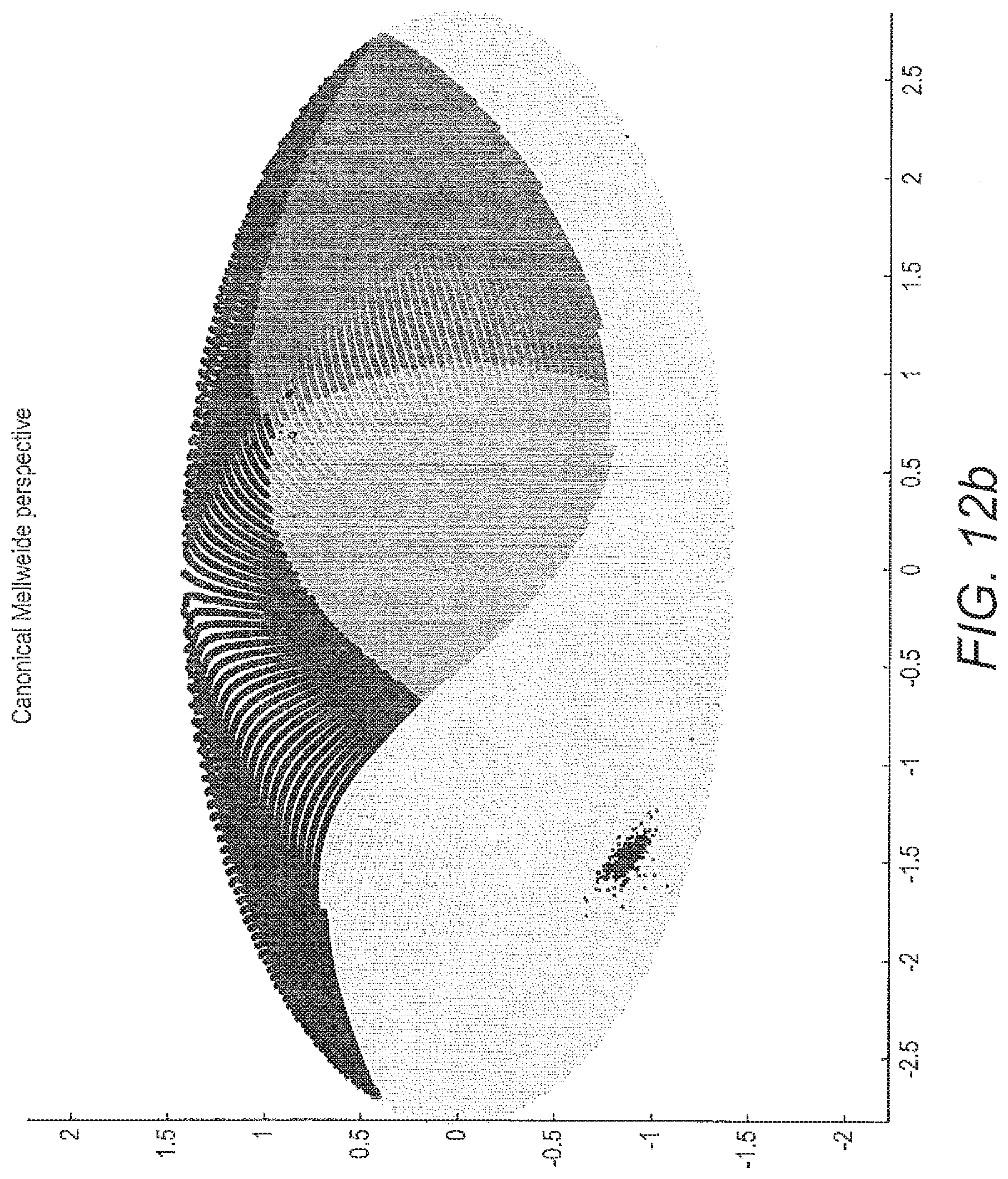
D00019
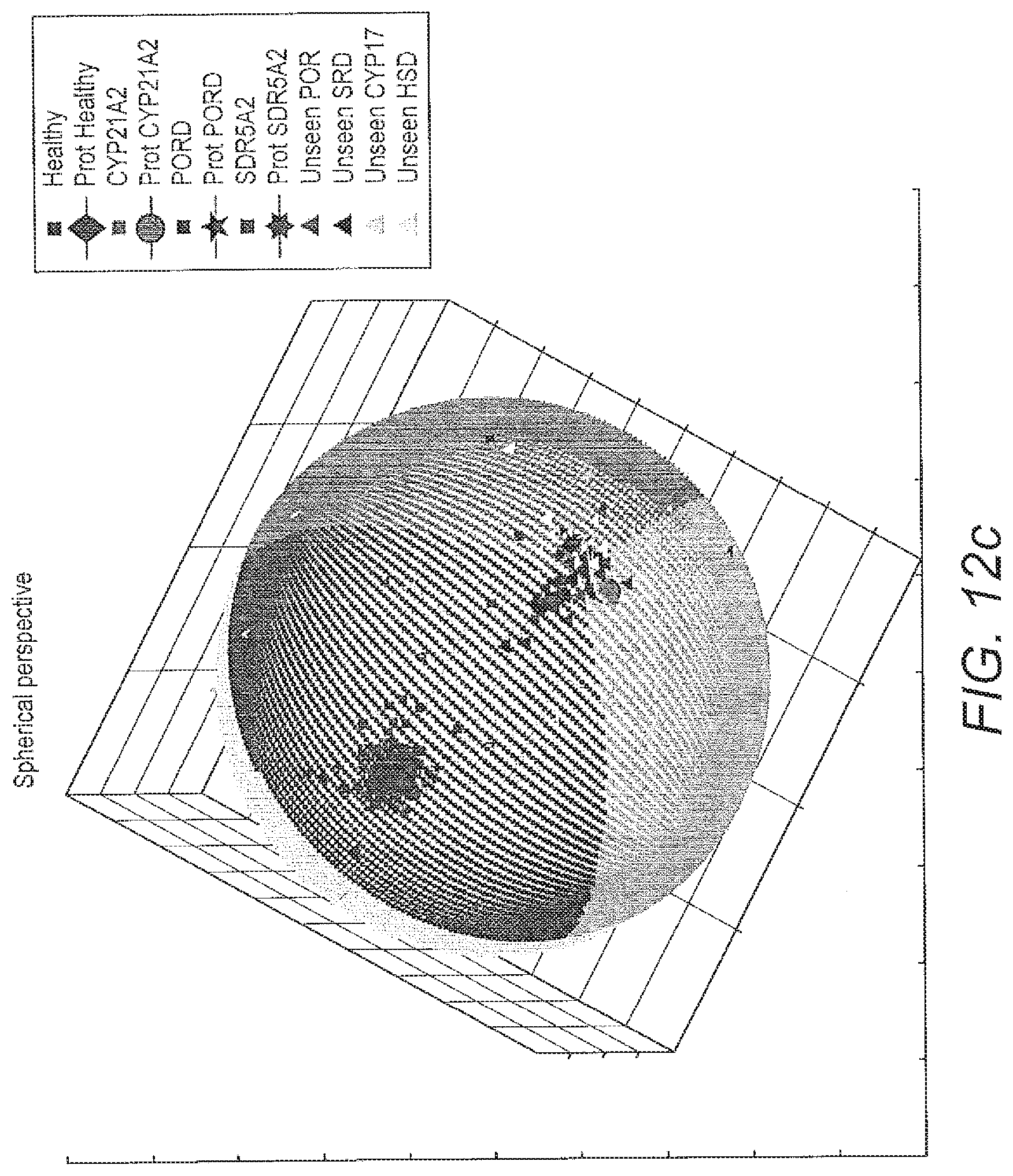
D00020
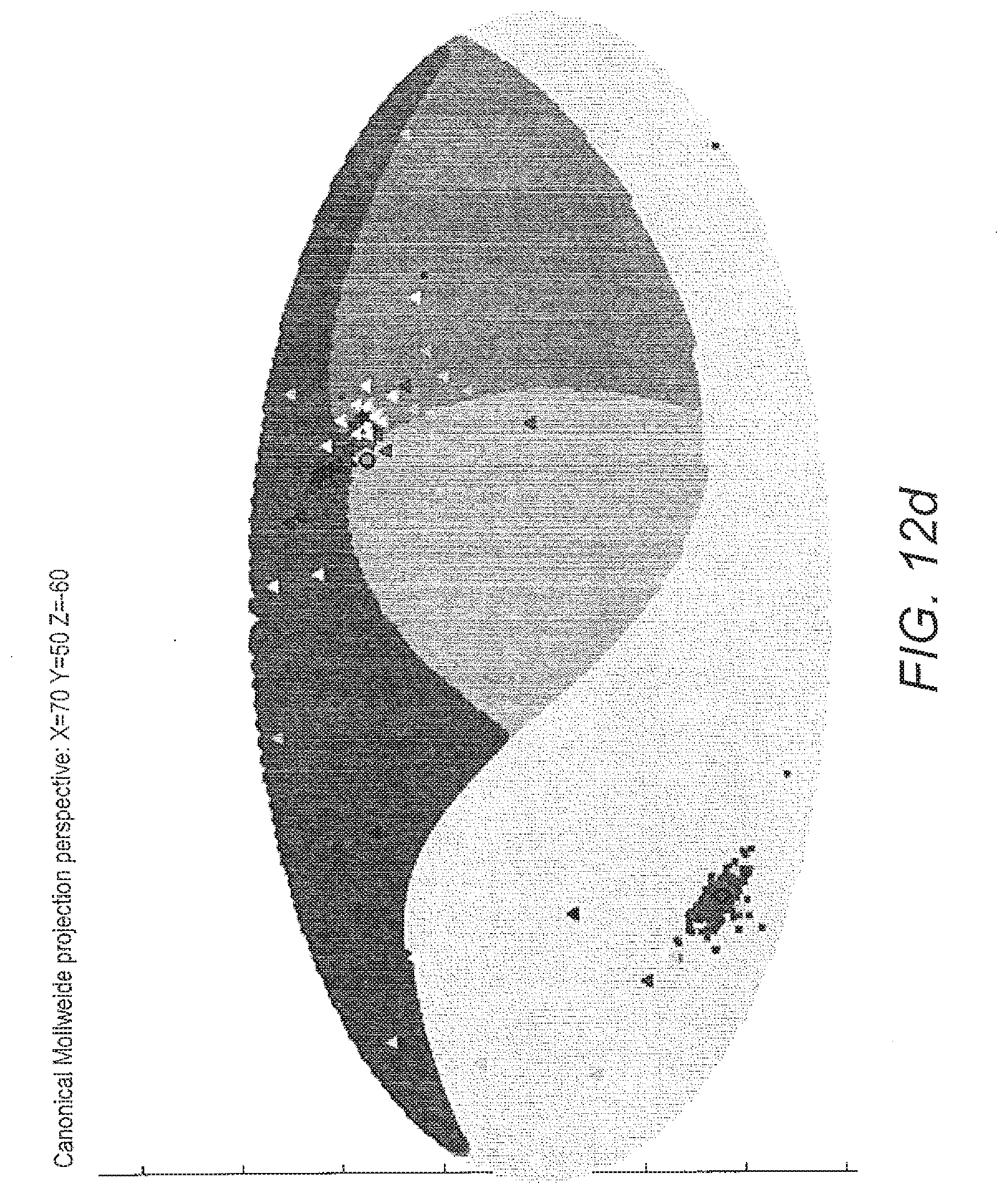
D00021

D00022
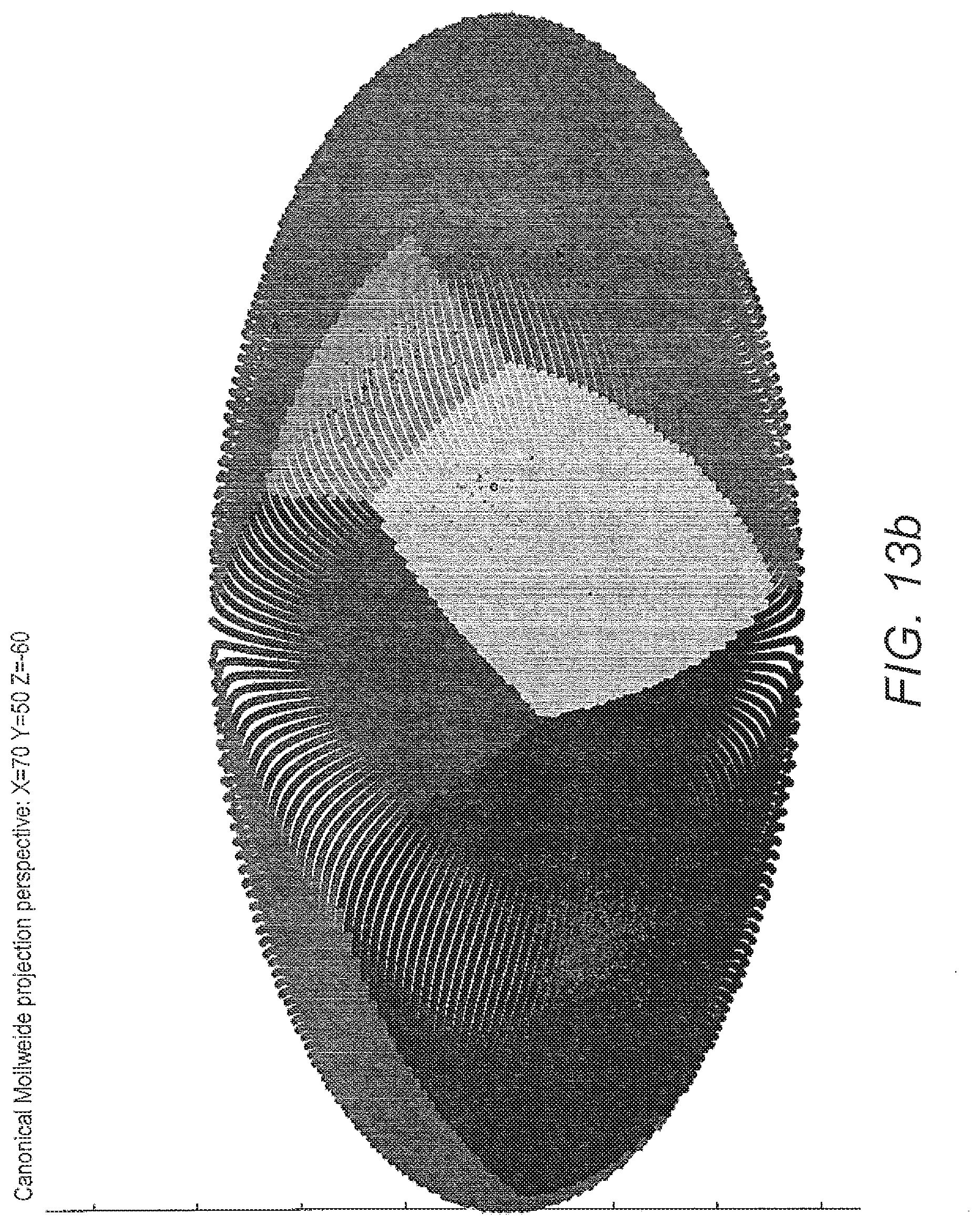
D00023
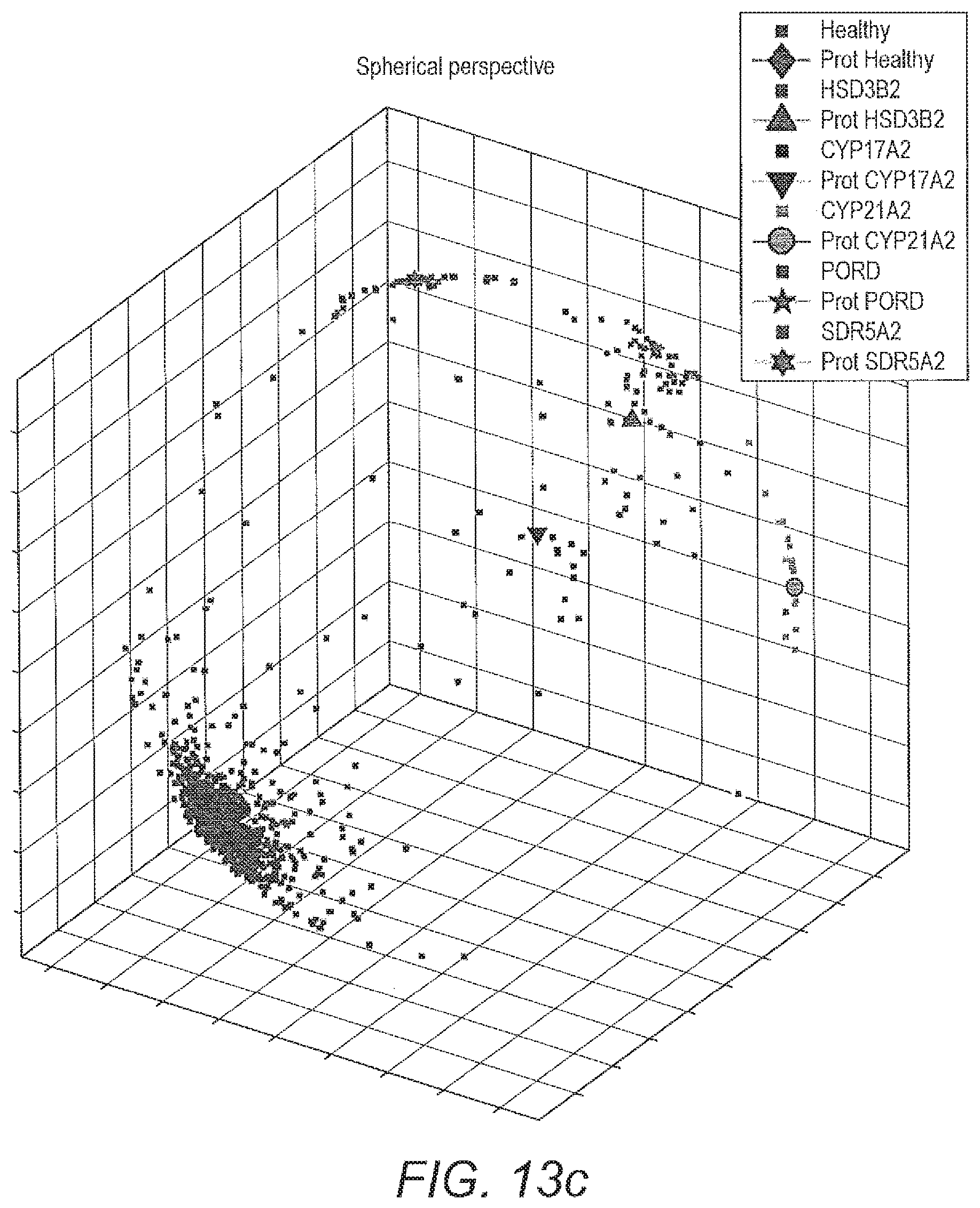
D00024
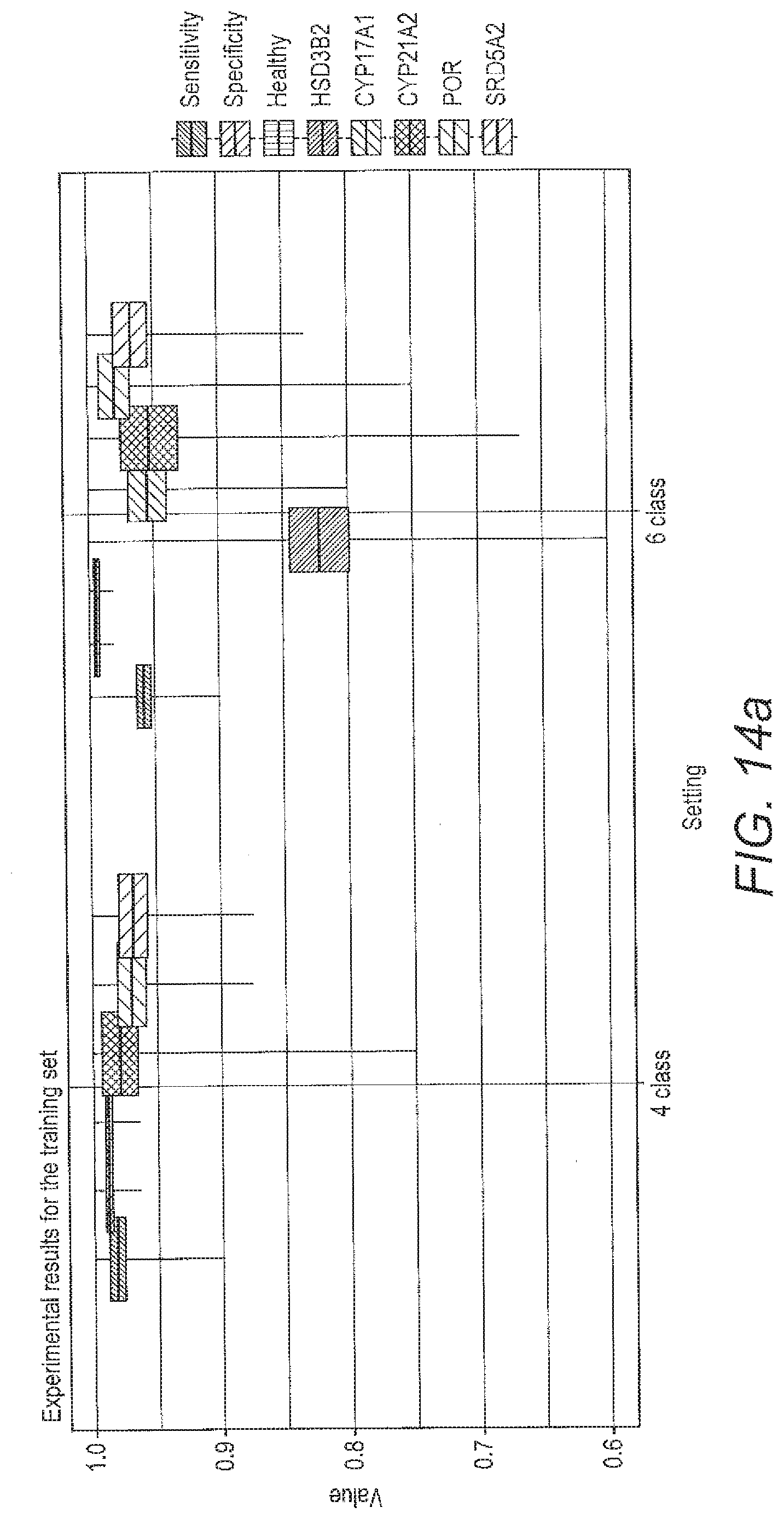
D00025
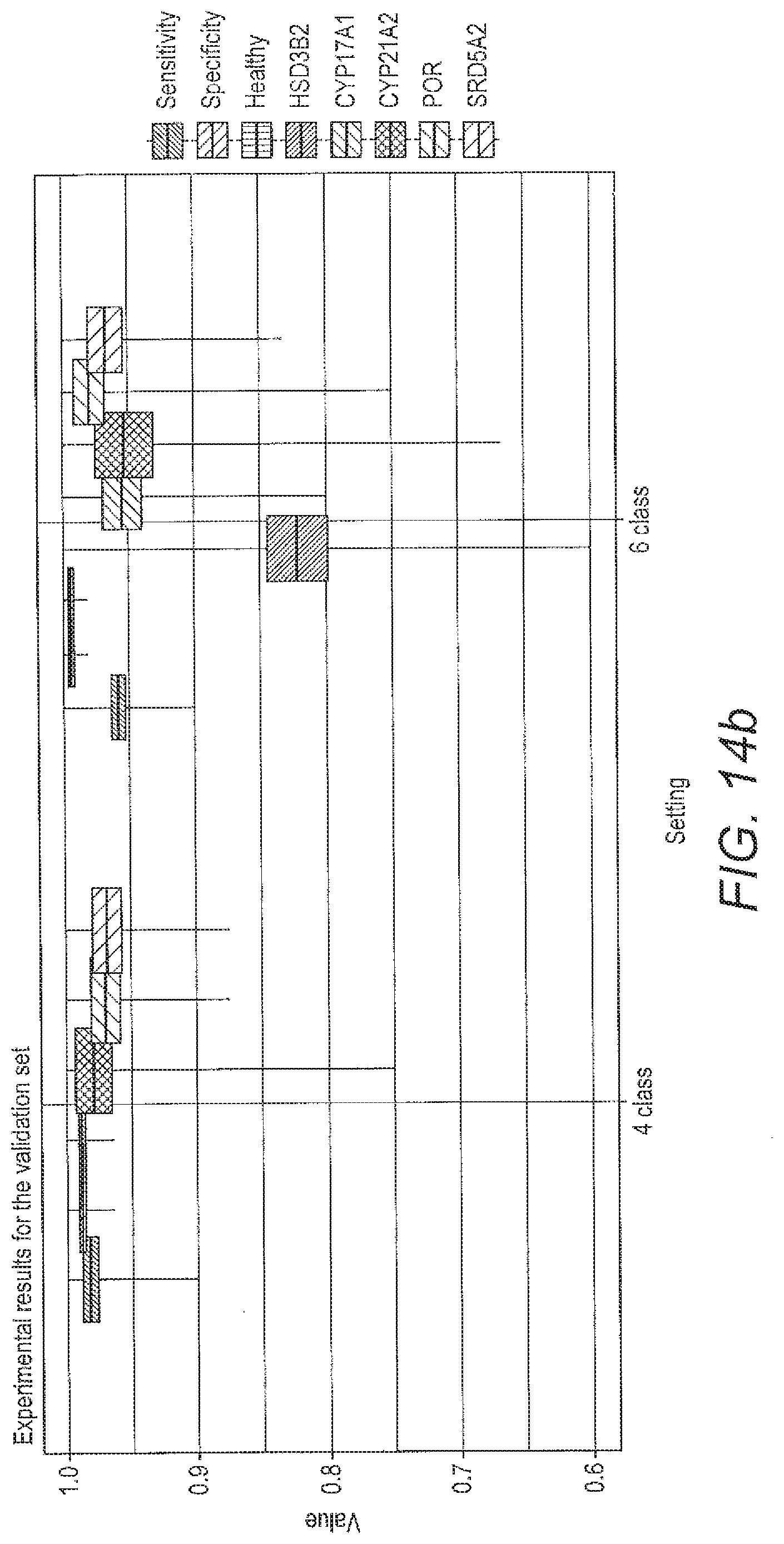


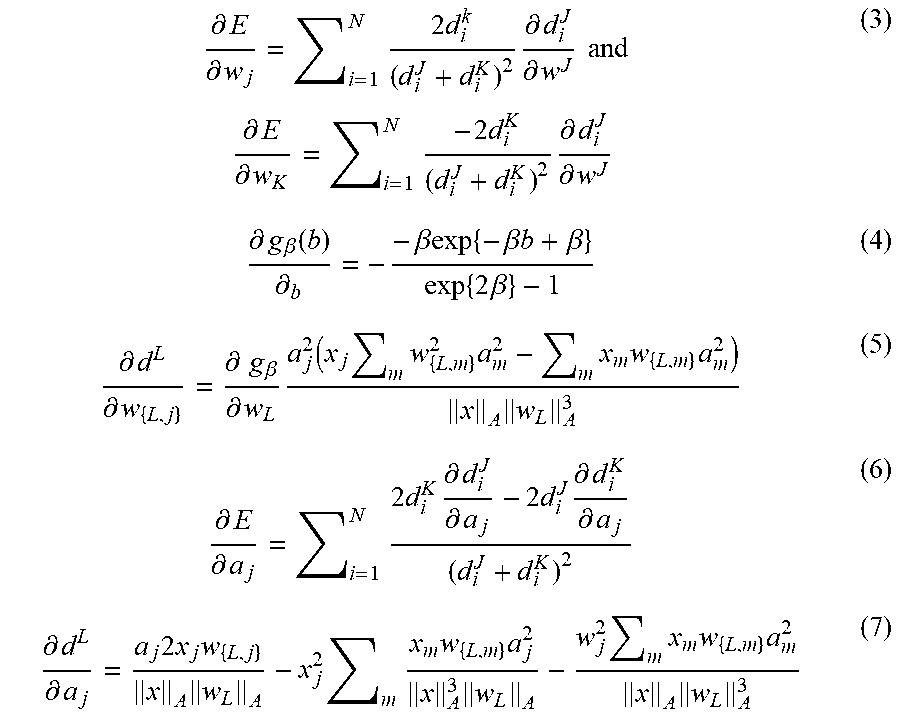

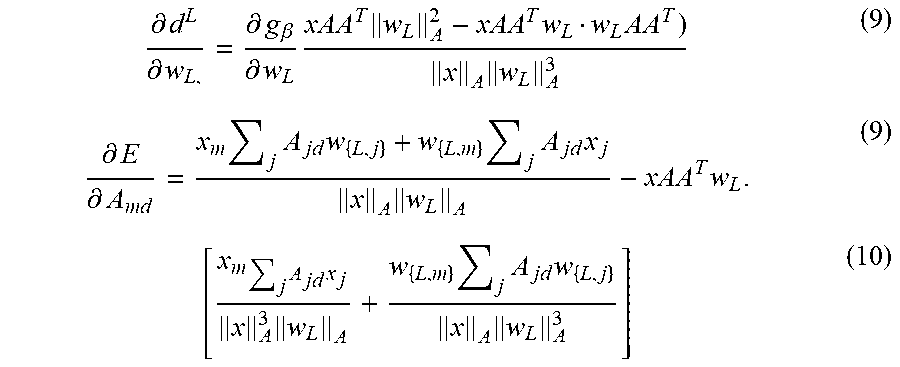
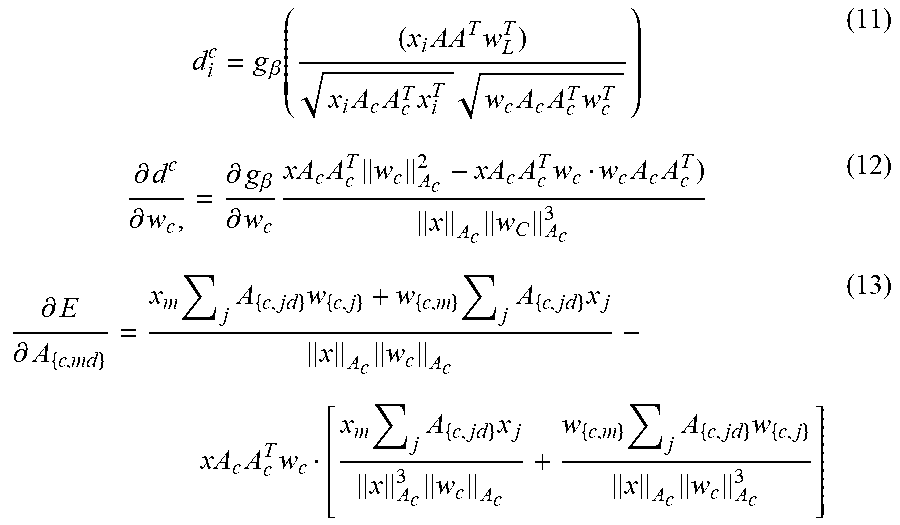




P00001

XML
uspto.report is an independent third-party trademark research tool that is not affiliated, endorsed, or sponsored by the United States Patent and Trademark Office (USPTO) or any other governmental organization. The information provided by uspto.report is based on publicly available data at the time of writing and is intended for informational purposes only.
While we strive to provide accurate and up-to-date information, we do not guarantee the accuracy, completeness, reliability, or suitability of the information displayed on this site. The use of this site is at your own risk. Any reliance you place on such information is therefore strictly at your own risk.
All official trademark data, including owner information, should be verified by visiting the official USPTO website at www.uspto.gov. This site is not intended to replace professional legal advice and should not be used as a substitute for consulting with a legal professional who is knowledgeable about trademark law.